VIJAY S. IYER, M.D.


Interventional cardiologist at UBMD says heart disease is back as the No. 1 killer of men and women in the U.S. The cause? Poor diet, obesity, too much stress and high diabetes levels, among other factors. He talks about advances in heart disease treatments and new heart implants now available. P.4
Exercise Beneficial for PEOPLE DIAGNOSED WITH ALZHEIMER’S
JESSICA PIRRO
Head of Crises Services talks about suicide in Western New York and what her agency does to reduce the problem. P.9

FIVE PLACES TO TRY SALT CAVE THERAPY
THE DENTIST WILL NOW SEE YOU … AT YOUR HOME
With a desire to help the underserved dental communities since she was in dental school, Ashleigh Robinson has left her stationary dental office and now travels door to door to provide dental services to all who need it. P.10


BFOHEALTH.COM SEPTEMBER 2023 • ISSUE 107 FREE
P.14
P.12
Is Venting Good For Your Health?

risk. Having a strong social support network has been linked to better psychological health.
Venting to people in that network is one way to reduce the impact of daily stressors, said Millstein, also an assistant professor in the department of psychiatry at Harvard Medical School. "Calling a friend and letting it out can be helpful. It helps us feel connected to our social support networks, which is a big determinant of life satisfaction and overall well-being."
Choose your audience wisely
Speaking to someone who is supportive of your feelings can be helpful, even if that person offers a different perspective, she said.
Shaffer said.
Venting without an audience
If speaking feelings aloud to someone else feels unsafe, another alternative is to write them down, Shaffer said.
Studies have found numerous health benefits to expressive writing, the practice of writing down feelings on a daily basis. It has been shown to aid in healing from traumatic experiences and to help lower blood pressure, boost the immune system, improve sleep and lessen depression and pain.
Don't forget the positive
Venting — the release of negative, pent-up emotions — can feel good. But is it actually good for you? Or does it do more harm than good to dwell on negative thoughts and feelings?
Experts say that depends on a number of factors, including who's on the receiving end of a venting session, how often a person does it and what type of feedback they receive.
"By and large, we do need to get our negative emotions out," said Rachel Millstein, a staff psychologist in the behavioral medicine program and the lifestyle medicine clinic at
Massachusetts General Hospital in Boston. "The ways we do it, though, that's where it's healthy or unhealthy, productive or unproductive."
Why vent

Personal relationships, work, finances and discrimination are just some of the daily stressors that may fuel someone's need to vent. Research shows this kind of stress can raise the risk for cardiovascular disease, whereas releasing or managing stress can improve physical and psychological health, lowering that
But venting to someone who is dismissive of your feelings can be detrimental, said Jonathan Shaffer, an associate professor of clinical health psychology at the University of Colorado in Denver. "It's invalidating to share and get no response from the other person. It might make you feel like you don't have worth or are not loveable."
Venting also can be counter-productive if the listener amplifies negative feelings and "the conversation spirals. Then you can pull each other down," Millstein said.
Another negative consequence could be if the listener gets tired of listening. "If you vent over and over again, this person might not want to be present, and this can fray a social connection," she said.
For major stressors, it might be more helpful to speak to a therapist,
Whether releasing feelings on paper or in person, Shaffer suggests finding ways to focus on the positive, as well as the negative. For example, ending a venting session with a focus on things for which the person is grateful can help restore positive feelings, he said, as can mindfulness practices.
"Make a plan for some type of relaxation, such as deep breathing or meditation afterwards," he suggested.
Other ways to relieve stress
Exercise also can relieve stress and release negative feelings, Millstein said.
"And don't forget that humor is a really good coping strategy, too," she said. Venting to a friend with a good sense of humor may be twice as helpful, because "sometimes other people can help us see the funny side of things."
Pelvic Pain Bringing You Down?


If you are between the ages of 18-70 and have been experiencing pelvic pain for more than three months, you may be eligible to participate in an NIH-funded study to evaluate 2 evidence-based, non-drug treatments for Urologic Chronic Pelvic Pain Syndrome (UCPPS). Qualified participants, male or female, will receive a noninvasive medical examination to confirm UCPPS and 10 weeks of treatment at no cost, with few clinic visits.

Qualified participants may receive up to $225 for their time.
een the ages of 18-70 and have been experiencing more than&three months, you may be eligible to NIH funded study to evaluate 2 evidence based, nons for Urologic Chronic Pelvic Pain Syndrome (UCPPS) pants, male or female, will receive a non- invasive ation to confirm UCPPS and ten weeks of treatment at w clinic visits Qualified participants may receive up to me
If you are between the ages of 18-70 and have been experiencin pelvic pain for more than&three months, you may be eligible to participate in an NIH funded study to evaluate 2 evidence based, drug treatments for Urologic Chronic Pelvic Pain Syndrome (UCPP Qualified participants, male or female, will receive a non- invasive medical examination to confirm UCPPS and ten weeks of treatme no cost, with few clinic visits Qualified participants may receive $225 for their time

Health insurance is not needed to participate. Please call 716-898-6254 to learn more about this clinical study.
e is not needed to participate. Please call 716-898- 6254 bout this clinical study.
Health insurance is not needed to participate. Please call 716-898to learn more about this clinical study.

Page 2 • IN GOOD HEALTH – Buffalo & WNY’s Healthcare Newspaper • September 2023
at Buffalo - Behavioral Medicine Clinic
UB Behavioral Clinic at: 7168-6254 ppic.com University at Buffalo - Behavioral Medicine C Pelvic Pain Bringing
Down?
Yo
Call the UB Behavioral Medicine Clinic at: 716898-6254 ubeppic.com
JOIN OUR TEAM
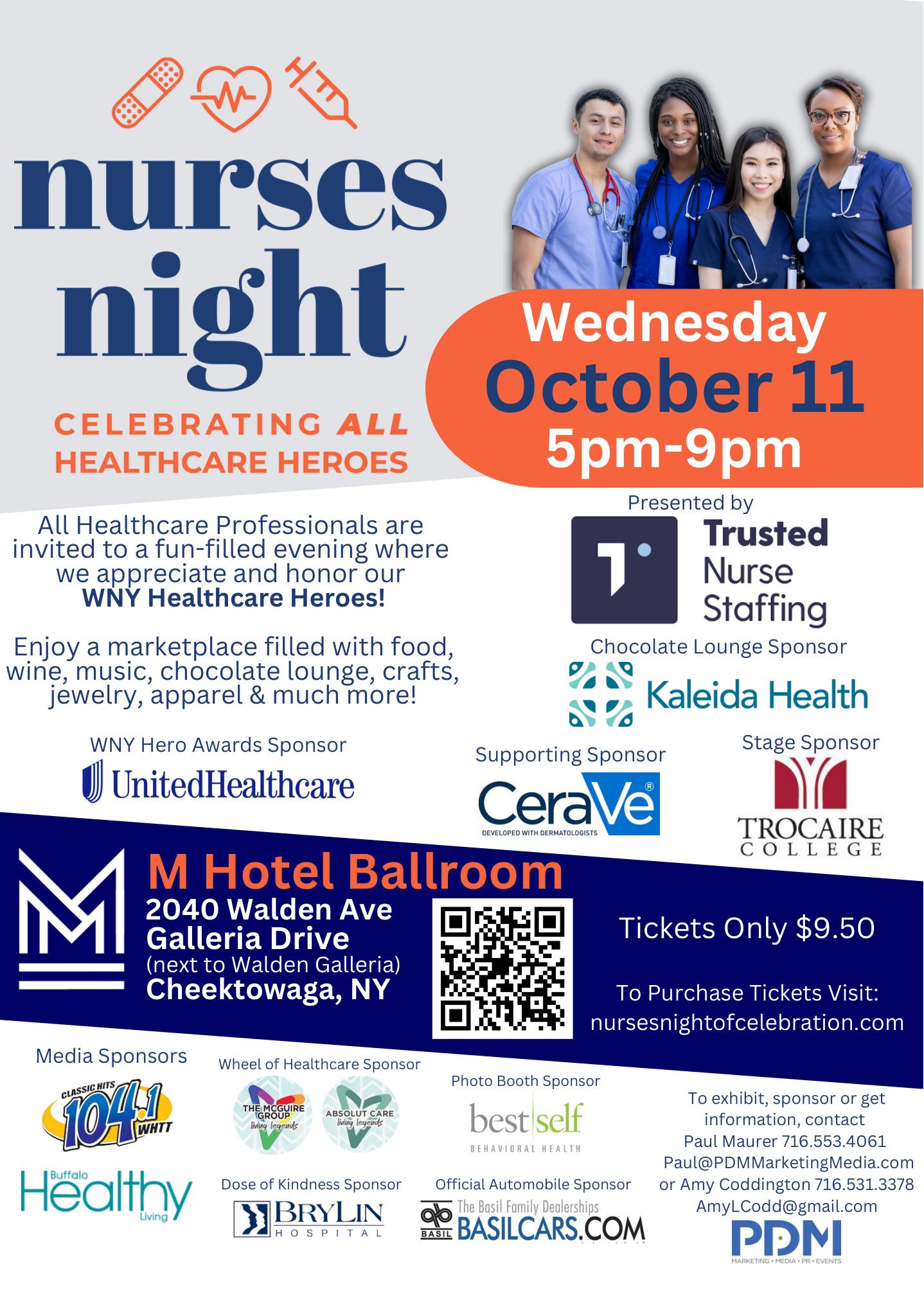
We have immediate opportunites for full-time and part-time positions with the Mercy Flight EMS team for Dispatcher, Certified First Responder, EMTB, A/EMT, A/EMT-CC and EMT-Paramedic candidates. Pay







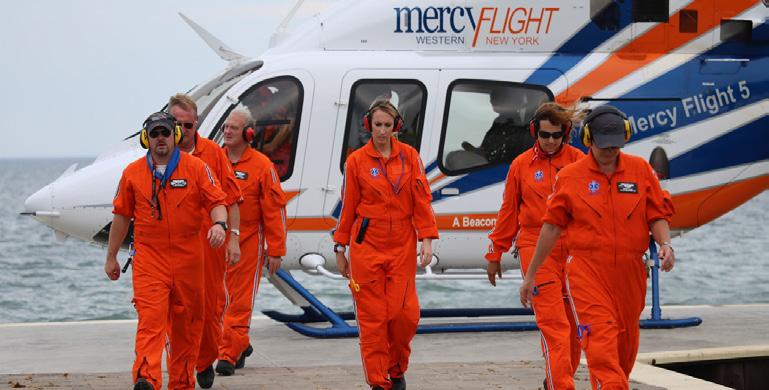


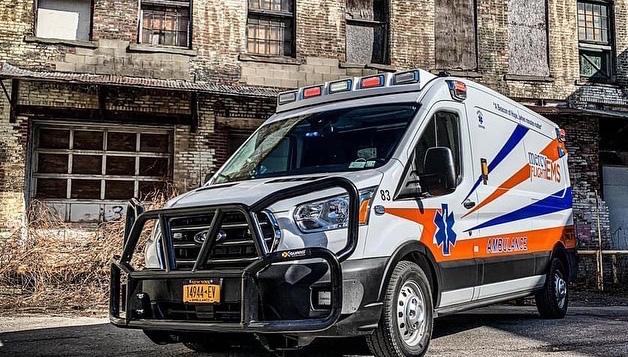
with experience, starting at:














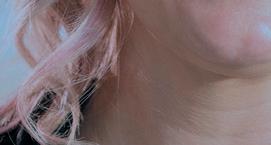









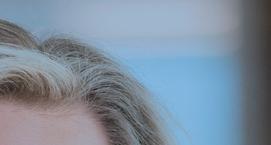
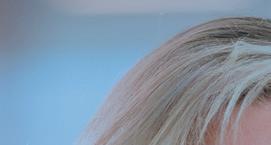



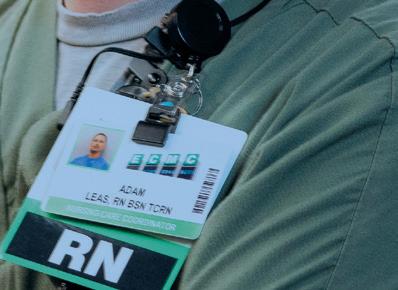
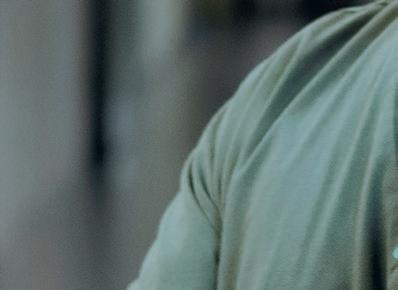





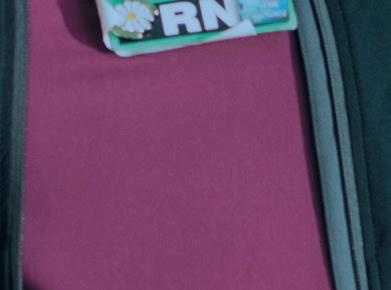
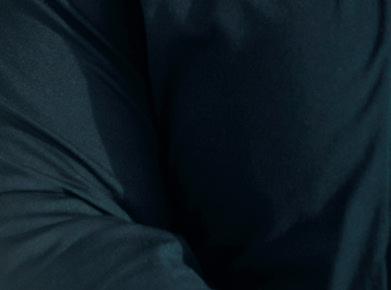


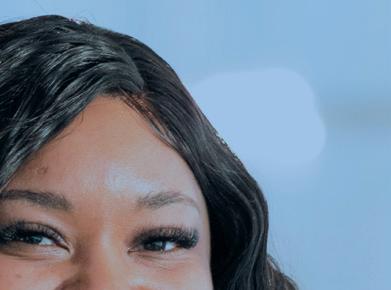
September 2023 • IN GOOD HEALTH – Buffalo & WNY’s Healthcare Newspaper • Page 3 100 Amherst Villa Road / Buffalo, NY 14225-1432 716.626.5808 / / MERCYFLIGHT.ORG GREAT
WHY MERCY FLIGHT EMS IS A • DYNAMIC PEOPLE • EXCITING LEARNING OPPORTUNITIES • MERCY FLIGHT GIVES BACK TO THE COMMUNITY • FLEXIBLE SCHEDULING AVAILABLE • COMPETITIVE COMPENSATION AND BENEFITS • DEVELOP YOUR EMS CAREER WITH MERCY FLIGHT • STATE-OF-THE-ART EQUIPMENT Mercy Flight, Inc. is an equal opportunity employer and a proud supporter of the WNY community.
PLACE TO WORK:
Apply today at mercyflight.org/join-our-team
rates
CFR Drivers $15.65/hr EMT-Basic $17.85/hr A/EMT $18.85/hr A/EMT-CC $23.50/hr EMT-Paramedic $24.50/hr Dispatcher $18.40/hr • 401(k) with 3.5% Employer Match for all employees • Wide variety of health and welfare benefits available for full-time employees At ECMC, each of us—from doctors, nurses, support sta , and specialists—is focused on not just healing the community but supporting each other at every turn. Our commitment to our employees starts with a rewarding work environment and continues through to our professional development programs. Whether you’re just starting out or you’re a seasoned healthcare professional, ECMC is the perfect t to further your career. Join the ECMC family of caregivers at ECMC.EDU/CAREERS THE BEST CARE HAPPENS WHEN WE COME TOGETHER. SAVING LIVES SIDE BY SIDE EC4033 In Good Health 1/2 pg ad (Nursing) (9.5 x 6.75).indd 1 4/18/23 7:20 AM
are commensurate
Meet Your Doctor
By Chris Motola
Vijay S. Iyer, M.D.

Interventional cardiologist at UBMD says heart disease is back as the No. 1 killer of men and women in the U.S. The cause? Poor diet, obesity, too much stress and high diabetes levels, among other factors. He talks about advances in heart disease treatments and new heart implants now available
Q: We spoke about seven years ago. We talked about uses for 3D printing in medical training.
A: We were using it for complex procedure training, yes.
Q: Have the applications evolved since then?
A: We’re mostly using it for the same things, for training purposes. We are also now using it for individual case planning for one-off cases that are unique, or if we’re planning to utilize a device for an off-label purpose and want to try to figure out how the device will behave. But a lot of the uses continue to be the same.
Q: I understand you’re utilizing a new implant for complicated heart failure cases. There was a story that ran recently in The Buffalo News about a patient who
seems to be doing quite well with it.
A: There’s a large number of devices coming out for heart failure. It’s a large population of patients who sort of fall between having advanced heart failure but aren’t good candidates for other interventions or implants, that use cardiac contractility modulation therapy. A number of different devices have been trialed, so there’s a big market for these devices, and we’re involved in a bunch of those trials.
Q: What is CCM?
A: This is an FDA device similar to a pacemaker that goes into the septum that’s implanted by an electrophysiologist. It’s for advanced heart failure patients who continue to experience symptoms despite receiving medical therapy. The CCM
device seems to improve cardiac contractility and symptoms. Whether it improves long-term survival is yet to be known, but it does seem to improve their symptoms in the shortterm.
Q: How long have the devices been in use?
A: The device has been out for more than a year. We started implanting them over the last two or three months. It’s very early, but so far the initial success rates are looking pretty good. Implants have all gone without any complications. Patients have all left the hospital feeling better. We’ll have to wait and see about rehospitalization rates and long-term relief of symptoms. Time will tell.
Q: Are we seeing broader uses for devices for cardiology over time?
A: I think so. There are a number of devices being developed. There’s one being developed for the carotid artery that’s implanted in the neck. There are devices that are meant to restore ventricular size. So there is a large market of devices that are being tried and tested. It’s premature to say whether they’ll all be helpful or not, but what we do is make sure that patients are optimized medically and they get good follow-up. And, if they are good candidates for a transplant or an implanted device that they get them. Despite the best treatment there’s still often a gap, and mortality for these advanced heart failure patients still tends to be pretty high.
Q: What are the advantages of implants over surgery?
A: Oh, it depends on what you’re using it for. Some implants are temporary. Some implants are permanent. With surgery, it depends on what kind of surgery you’re talking about. Surgery for restoration of the ventricle over time has not been found to be very effective. Surgery is more invasive. It’s a good option for a small number of patients, but in general surgery in advanced heart failure patients tends to be more morbid and tends to be risky.
Q: Has your philosophy toward cardiac interventions changed at all since we last spoke seven years ago?
A: More and more we’re starting to realize that these devices are a very good alternative for a lot of patients. For a lot of these patients other therapies are out of reach; many of whom would have been subjected to surgery, are now getting these devices. The field has already grown in huge amounts and it’s still growing fast. It’s now the treatment of choice for the majority of patients with advanced coronary disease and valvular disease, and a lot of patients with advanced heart failure. So we have a lot more tools in the continuum of care to improve outcomes. And the tools are getting better every day.
Q: Heart disease is still the No. 1 killer overall.
A: I think COVID took over transiently, but we are back to heart disease being the No. 1 killer in both men and women.
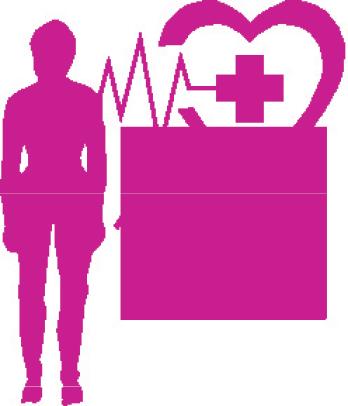
Q: What’s keeping it at the top of the list despite all these advances?
A: Overall mortalities are declining, but a lot of other things have gotten worse. Our diets have gotten worse. The obesity epidemic continues to get worse, especially in third world countries. Diabetes has
become a bigger problem. So despite some of the improvements we’ve seen in therapies, these factors are impacting patient health. And there are other issues. A lot of the patients who would have died from myocardial infarctions in the past are now alive, but instead of dying they’re in need of ongoing care. So there are consequences to our actions. But, yes, we’re making a lot of progress on the overall continuum but there’s a long way to go in eradicating heart disease.
Q: What role do interventional cardiologists play in prevention?
A: WThe way I think of it is that interventional cardiologist take care of acute problems, but these are systemic problems that can only be treated with lifestyle modification and prevention. Even after the intervention, that continuum of care has to continue. We still need to educate on diet and lifestyle and managing stress. What we do in the cath lab is one moment in time of that continuum.
Q: What effect does stress have on the heart?
A: There’s a fair amount of data that stress has a direct impact on blood pressure and is pro-inflammatory. People who manage their stress through mindfulness and meditation tend to see their blood pressure come down. Whether that changes longterm outcomes we don’t know; there are no randomly controlled trials. But we know patient wellness is generally better when they’re managing stress.
Q: If we speak again in another seven years, where do you want your field to be at that point?
A: The field is going to continue to evolve and get more precise, which will produce better outcomes. But it’s also going to integrate better into wholesome and holistic care. People think of interventional cardiology as a bunch of people sticking catheters into people and clearing blockages. I think we’re going to get more sophisticated, make sure we get to patients sooner and do better follow-up. And I think our treatments will continue to get less morbid and less invasive.
Lifelines
Name: Vijay S. Iyer, M.D.
Position: Division chief of cardiovascular medicine and interventional cardiologist with UBMD Internal Medicine and Jacobs School of Medicine and Biomedical Sciences
Hometown: Mumbai, India
Education: Grant Medical College, Maharashtra University of Health Sciences, Mumbai, India (medical doctor); Drexel University, Philadelphia, Ph.D., pharmacology; University of Minnesota, Minneapolis, fellowship in interventional cardiology; University at Buffalo Jacobs School of Medicine and Biomedical Sciences, fellowship in cardiovascular disease and postdoctoral fellowship in the division of cardiology
Affiliations: Buffalo General Hospital; Niagara Medical Center; Olean General Hospital
Organizations: American College of Cardiology; American Heart Association Family: Son, 19
Hobbies: Reading, traveling, watching movies, golf
Page 4 • IN GOOD HEALTH – Buffalo & WNY’s Healthcare Newspaper • September 2023
Stress, Depression Won't Raise Your Odds for Cancer: Study
Alarge new study challenges the long-held idea that depression makes people more vulnerable to cancer, finding no association between the mental health condition and most types of cancer.
The study, of more than 300,000 adults, found that neither depression nor chronic anxiety were linked to increased odds of developing cancer in the coming years. And when researchers looked at specific types of cancer, the findings were largely the same.
The one exception was a slightly increased risk of cancers that are strongly linked to smoking, including lung cancer. And the analysis suggests that smoking — as well as alcohol and heavy body weight — are the real culprits, rather than depression or anxiety themselves.
Experts said the study, published online Aug. 7 in the journal Cancer, may offer reassurance to people who've blamed a cancer diagnosis on their mental health struggles.
"Our findings show that there is no evidence for this," said study leader Lonneke van Tuijl, a health psychology researcher at University Medical Center Groningen in the Netherlands.
Unfortunately, that kind of self-blame "comes up a lot," said physician William Breitbart, chief of psychiatry at Memorial Sloan Kettering Cancer Center in New York City.
"There are many patients who
feel guilt, who say 'I gave this to myself,'" said Breitbart, who was not involved in the study.
The reality, he said, is that cancer is many different diseases, each caused by a complex interplay of genes and environment.
There has been a decades-old interest, though, in the question of whether daily stress, depression or even a less-than-sunny personality might help cause cancer, Breitbart noted.
Over the years, that has included studies suggesting that having a "fighting spirit" or "positive attitude" helps people survive cancer.
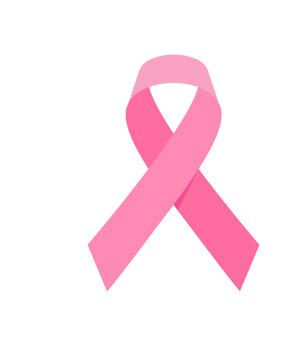
"We called it the tyranny of positive thinking," Breitbart said. "It was a real thing, and it still is."
There is a logic to the idea that depression or anxiety disorders could increase the risk of cancer. The conditions are linked to heightened odds of certain other physical health ailments, like heart disease. In that case, researchers believe the connection might partly be due to the ravages of stress hormones on the cardiovascular system.
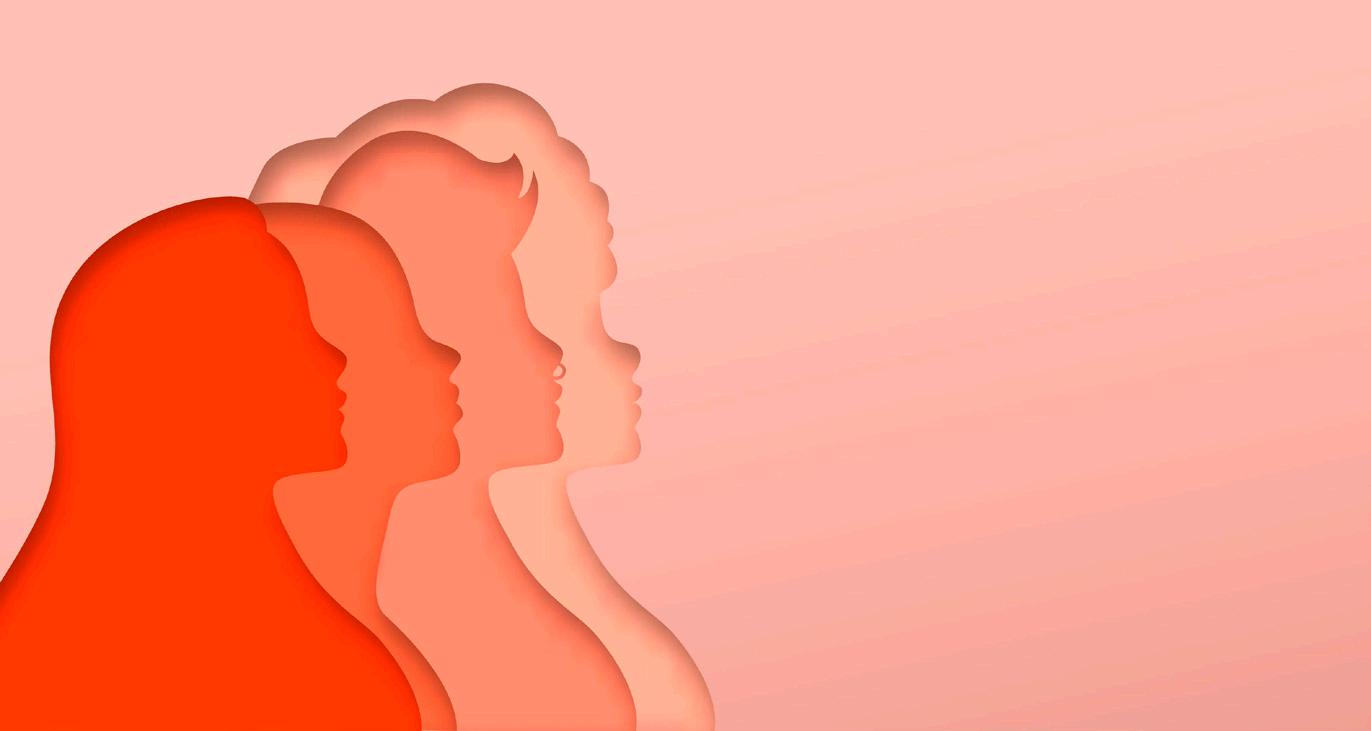
Similarly, it's been proposed that stress hormones might dampen immune system activity enough to feed tumor development.
But when studies have delved into the question of whether depression and anxiety are linked to cancer risk, the findings have been "all over the place," Breitbart said.
SERVING WESTERN NEW YORK

Leaders in Orthopaedic Care
UBMD Orthopaedic & Sports Medicine is the largest orthopaedics group in Western New York, and we are still growing.


Injuries from foot and ankle, hand and wrist to spinal conditions, joint, hip and back pain, knee, elbow, shoulder, concussion and sports medicine, our team of doctors, physical therapists, athletic trainers and other healthcare providers can help with any orthopaedic injury. We’re dedicated to being the best at making you better.
Editor & Publisher: Wagner Dotto
Writers: Deborah J. Sergeant, Chris Motola, Jim Miller, Gwenn Voelckers, Anne Palumbo, Brenda Alesii, Ernst Lamothe Jr., Amanda Jowsey, Jane Schmitt, Catherine Miller
Advertising: Anne Westcott, Amy Gagliano, Pam Roe

Layout & Design: Angel Campos-Toro Office Secretary: Allison Lockwood
No material may be reproduced in whole or in part from this publication without the express written permission of the publisher. The information in this publication is intended to complement—not to take the place of—the recommendations of your health provider. Consult your physician before making major changes in your lifestyle or health care regimen.
ADVERTISE
FOCUSING
Stages: Understanding the stages of breast cancer: 0, 1, 2, 3 and 4 | Screening: Breast cancer screening: Is it worth if you’re over 70? | Diagnosis: Older women’s is often overdiagnosed, raising risk of unnecessary treatment: study | Fertility — When are women most likely to conceive? Understanding “fertile windows.” | Contraceptive: The FDA just approved the first overthe-counter oral contraceptive | Early Menopause: What are the signs and what can women do to mitigate its effects?
September 2023 • IN GOOD HEALTH – Buffalo & WNY’s Healthcare Newspaper • Page 5
A monthly newspaper published by Local News, Inc. Distribution: 25,500 copies throughout more than 1,500 high-traffic locations. In Good Health is published 12 times a year by Local News, Inc. © 2023 by Local News, Inc. All rights reserved. P.O. Box 550, Amherst, NY 14226 Phone: 716-332-0640 • Fax: 716-332-0779 • Email: editor@bfohealth.com
CHARGE
WE DESIGN YOUR AD AT NO
Health SPECIAL ISSUE
HEALTH
Women’s
OCTOBER ISSUE OF IN GOOD
SPECIAL EDITION
IN THIS
ON WOMEN’S HEALTH,
CANCER AWARENESS TO GET MORE INFORMATION PLEASE SEND AN EMAIL TO EDITOR@BFOHEALTH.COM OR CALL 716-332-0779 716 Health Location Now Open 111 North Maplemere Rd., Suite 100, Williamsville, NY 14221
BREAST
Amherst | Buffalo | Depew | Niagara Falls | Orchard Park | Williamsville Trusted Orthopaedic Care for Bones. Joint. Muscles. Concussions. Team Doctors For: Call or visit ubortho.com 716.204.3200 Schedule an appointment today and get expert care from the largest medical group in Western New York.
Live Alone & Thrive
hungry. Ha!
Practical tips, advice and hope for those who live alone
By Gwenn Voelckers tips,
and for alone
Solo Travel: The Hidden Joys and Benefits
By the time this edition of “In Good Health” hits the newsstands, I will have packed my bags, hired a cat sitter and stopped the mail.
I’ll be on my way to France for my annual solo sojourn to Paris to celebrate my birthday and further explore and enjoy one of my favorite places on earth.

In September, the tourist crowds have thinned, the weather is more to my liking (on the cooler side), and the locals have returned from holiday to open their shops, restaurants, homes and hearts to travelers like me.
My love affair with Paris was kindled on my 50th birthday. I wanted that important half-way milestone to be special and memorable. And it was!
I had dreamed of going to Paris for years and I wasn’t going to let my single status derail my dreams.
When I told my friends about my plans, I got mixed reactions. Many exclaimed “Oh, I could never do that! All alone?!”
They were right, of course. They would never experience the fun and fulfillment of traveling solo as long as they held onto that attitude.
Traveling alone, just like living alone, requires the right frame of mind to be successful and enjoyable.
But why travel alone in the first place? Why not grab a friend or two and make it a shared experience? Because the potential for self-discovery
and savoir faire that comes with solo travel is priceless.
I’m not suggesting an exclusive diet of solo travel, but I am encouraging you to consider this mode of travel, from time to time, for this important reason: You’ll gain both confidence and wisdom from your experience.
So, step on board and consider these benefits:
• You call the shots
When you travel alone, you are free to see and do whatever you like. Your decisions and itinerary are your own. And when it's just you, you are reminded of who you are, what you enjoy doing most, and what you like least.
with me or extend an invitation to join them. I’ve met some of the nicest, most interesting people this way. When traveling with friends and family, we tend to stay focused on each other and lose the chance to meet people we might otherwise have met. That could be a missed opportunity, especially if you are single and hoping to meet someone new.
• You can release your adventurous spirit
By yourself (with no one watching), you may be willing to take more risks — dance at outdoor concerts, get a henna tattoo, eat gelato for breakfast, maybe even swim with the dolphins!
Here we go!
I’ve never gone swimming with dolphins, but I have sampled some pretty exotic food, wrestled Old Paint into submission on a horse trail and held on for dear life while rafting down the Colorado River.
• Likewise, you can find some heavenly time to yourself
When you travel with other people, their interests may be at odds with yours. And precious time can be consumed with the inevitable negotiations that come with trying to satisfy everyone’s needs and desires.
Traveling alone allows you to follow your heart and own path.
• You make new friends more easily
I’ve discovered this time and time again. When I’m on my own, other travelers and "locals" are more likely to strike up a conversation
On your own and with fewer distractions, the opportunity for a tranquil, soul-soothing retreat is within your grasp. Whenever I travel, I like to build in time to myself to relax and recharge my batteries. Solo travel makes guilt-free “me” time possible.
Want to sleep in till noon, find splendid solitude in a secret garden, or enjoy your own company and a nightcap at the end of the day? Go for it, because you can.
• You learn a new language faster Je peux en témoigner! (I can vouch for that!). When traveling alone in France, I enjoy practicing the language. It was either that or go
But seriously, without a traveling companion to talk with or to aid in translation, I had to fend for myself. While I am far from fluent in French, I can at least order a croque-monsieur — a hot ham and cheese sandwich on my own. Want to learn a language more quickly? Travel solo.
• You build your confidence and sense of independence
Even a small jaunt can boost your self-confidence. All the decisions are yours, including your budget. You decide how to get where you’re going, where to stay, and how much to spend on transportation, food, accommodations, and things to do.
In no time, you’ll discover your own resourcefulness, ability to solve problems, and capacity to spend some time alone. Those are invaluable, lifelong lessons.
Solo travel is ripe with opportunities for self-reflection, growth, and joy. Start dreaming today. Pack your bags, and with no reservations (pun intended), set out on your journey with a spring in your step and a smile on your face for all the hidden treasures that await you.
Gwenn Voelckers is the founder and facilitator of Alone and Content empowerment workshops for women (now on hiatus) and the author of "Alone and Content: Inspiring, empowering essays to help divorced and widowed women feel whole and complete on their own " To contact Voelckers or purchase her book, visit www.aloneandcontent.com

5 Ways
Your Teen Can Prepare for Sports Season
Competitive sports can be a lot of fun for kids and teens, but starting a new season requires some planning.
Nemours TeensHealth, a website specializing in children’s health, offers some suggestions for kids and teens who are taking up a new sport or beginning a new season.

• Start by getting into shape. That will make it easier when you begin your sport.
You can do this by writing down an exercise plan. Ask your coach, gym teacher or trainer for workout ideas. If you can't get to the gym, apps and online workouts offer options for exercising at home.
Write down your goals for the
week and your workout plans. If you schedule specific workout times, it will help you stay motivated and stick to your exercise plan. Make a note of a workout you particularly liked so you can repeat it another week.
• Set realistic goals. While this can include general goals like making the team or getting in shape, smaller, specific goals are easier to achieve and can help you build toward your bigger goal.
Write down those goals and discuss them with a parent or coach. Set new goals once you reach those on your list.
• Gear up. If you're returning to your sport, make sure your
equipment still fits. If you're new to a sport, ask your coach what you'll need.
Secondhand or borrowed gear can save you money. Make sure all your gear is clean and safe to use. Ask your coach to look it over if you're unsure, Nemours suggests.
• Think about attending a sports camp. This can be a way to practice skills before a season begins. College players, coaches or other professionals often teach these camps.
Most include drill sessions, then scrimmages toward the end of the day. Drill work helps improve skills, while scrimmaging with other campers lets you practice those skills. This
can give you a sense of what it's like to play on a team.
• See your doctor for a sports physical. It's a busy season for these physicals, so make sure your family sets up an appointment before your season starts. If you wear glasses, consider visiting your eye doctor to check your prescription and get the right protective eyewear.
Be sure to build rest into your schedule, with at least one to two days off a week from competitive sports and training. Take at least two months off each year from any particular sport to prevent repetitive stress injuries, Nemours advises.
Page 6 • IN GOOD HEALTH – Buffalo & WNY’s Healthcare Newspaper • September 2023
TOPS: 75 Years Helping People Take Off Pounds Sensibly
By Jane Schmitt
For many people, the process of shedding excess pounds is a lifelong journey filled with highs and lows, triumphs and challenges, milestones and missteps.
You don’t have to go it alone, according to Sandy Frieday and Linda D’Amaro of TOPS Club Inc., now in its 75th year of helping people of all ages to “Take Off Pounds Sensibly.”
They are members and local leaders of TOPS, a Milwaukee-based wellness education organization with a massive network of weight-loss support groups.
“We’re all human,” said Frieday, Western New York area coordinator. “There are times when we mess up or don’t do what we know is best for our bodies. But the fact that we can get back on track and that [fellow members] are right there supporting us and showing us it can be done makes a big difference.”
At weekly meetings, members receive educational materials and engage in fun activities centered on nutrition, realistic goal-setting and behavior modification.

“This combined with weekly weigh-ins and encouragement from others helps people develop the knowledge, patience and self-esteem they need to make permanent, healthy lifestyle changes,” said D’Amaro, the TOPS advocate in Erie and Niagara counties and leader of the West Seneca chapter.
“We welcome everybody,” she added. “You have to come and see what we do.”
True to its roots
TOPS was established in 1948 by Esther Manz, a Milwaukee woman who believed that getting together with other dieters for mutual encouragement was a key to weight management and healthy living. By 1952, the nonprofit group had grown to 2,500 members across the Midwest and three years later it expanded into Canada. Here in New York state, there are more than 160 chapters including 84 in Western New York.
TOPS has stayed true to its roots, according to the website (www.tops. org): “[It’s] all about support, accountability, lasting friendships and connections and plentiful resources. Today the group offers recipes, TOPS Talks featuring the latest from the health and inspirational community, meal planning ideas, workouts, chapter resources and more.”
Affordability and accountability make it different from other weightloss programs, members said. The initial in-person visit is free and a basic package costs $49 for one year. The chapter run by D’Amaro, for example, meets Monday evenings at the West Seneca Senior Center and has weekly dues of $1.


Success stories
“I have lost about 70 pounds and it’s been great,” said Al of the town of Tonawanda who joined TOPS in September. “We weigh in once a week and it keeps me accountable.
For me, that accountability is the best. It has helped me a lot.”
Another benefit is the connection he has with fellow members.
“The camaraderie is fantastic,” Al said. “We all tell stories about what we did the previous week to help with weight loss. There is so much support.”
Another TOPS success story comes from Polly of Orchard Park. She joined the group 24 years ago to lose weight after the birth of her son and later rejoined to help improve her overall health and wellness.
“I like it because there are no gimmicks and nothing to purchase. Everybody does their own thing but we come together as a group,” Polly said. “The first meeting is free; you can just observe what they do and then decide if you want to join. It’s a small amount to join and then just a dollar a week for dues.”
She is part of TOPS No. 0939, led by D’Amaro.
“Linda is very enthusiastic and gets everybody sharing their strug-
gles and what works for them,” Polly said. “You need to have good habits and stick to them. It’s the accountability with a weekly weigh-in, but I think what’s really different is the support from other members. You form friendships very quickly and that support is a big piece of what’s missing in (other programs). It’s wonderful, and I rejoined because I decided to be a lifer and to keep going every week to make my health a priority. You stay on top of it.”
TOPS offers an online program, as well.
“I have been in my chapter since 2002 and some of my best friends are other TOPS members,” Frieday said. “It’s that support and caring; it’s relationships and recognition. That is what makes this special.”
More Info?
For more information about TOPS, visit www.tops.org or email the WNY area coordinator, Sandy Frieday, at sfrieday@rochester.rr.com
September 2023 • IN GOOD HEALTH – Buffalo & WNY’s Healthcare Newspaper • Page 7
StretchLab Southtowns 3860 McKinley Parkway, Suite 230 (716) 303-0518 | southtowns@stretchlab.com StretchLab Northtowns 8214 Transit Road (716) 559-7653 | northtowns@stretchlab.com 1-on-1 Assisted Stretch Studio IMPROVED SPORTS PERFORMANCE INCREASED RANGE OF MOTION & FLEXIBILITY REDUCE MUSCLE & JOINT PAIN IMPROVE POSTURE REDUCE STRESS INTRO-STRETCH 50-MINUTE CALL TO BOOK YOUR STRETCH! $49 ASSISTED STRETCH STUDIO
At weekly meetings of members of TOPS — Take Off Pounds Sensibly — in West Seneca. Members receive educational materials and engage in fun activities centered on nutrition, realistic goal-setting and behavior modification.
Assisted Suicide


NY Considers Medical Aid in Dying for Terminal Patients
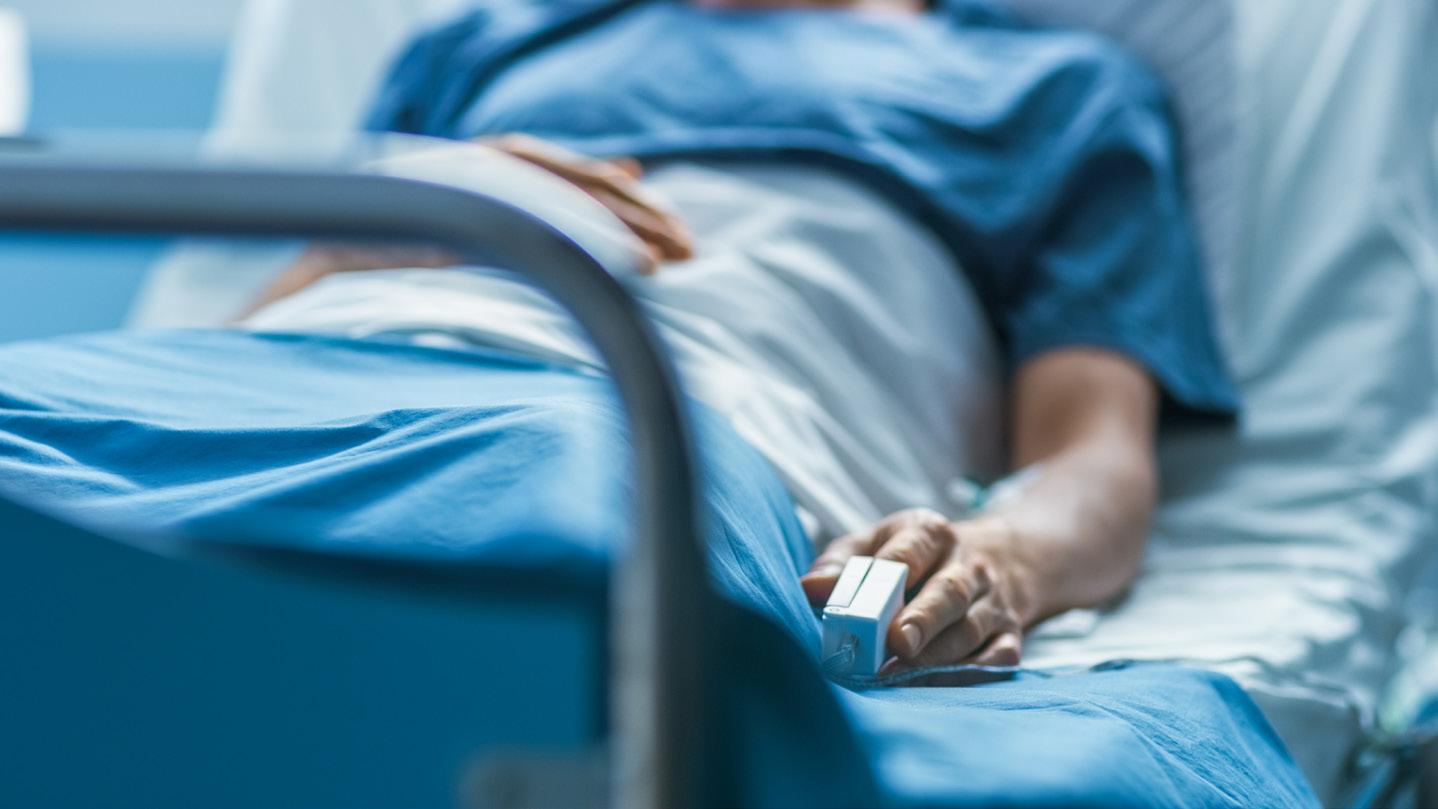
 By Deborah Jeanne Sergeant
By Deborah Jeanne Sergeant
Medical professionals assisting patients in ending their lives sounds paradoxical. But groups such as Death With Dignity based in Portland, Oregon, want to see New York join them as a state that permits lucid, terminally ill patients to request a dose of lethal medication to take when they deem it’s the right time to die.
The proposed New York law, the Medical Aid in Dying Act (A995/ S2445), states that to be eligible patients must have six months or less time left to live and must be capable of requesting medication both orally and in writing, as well as administering it themselves.


“Death with Dignity laws have been proven effective at improving healthcare quality at the end of life, regardless of whether or not an individual chooses to hasten their death,” the organization’s website states. “People travel from all over the world to access New York’s doctors and hospitals. New Yorkers shouldn’t have to leave the state to receive the care they need at the end of life.”
Amy Paulin (D-Scarsdale) is the chairwoman on the NYS Assembly Committee on Health who introduced the bill on Jan. 12, 2023. She believes that the bill “provides dignity in death and throughout one’s life,” she said. “It allows someone to make a choice when they know they’re going to die anyway to determine how that death would be carried out. It helps alleviate pain.”
Terminal patients can receive hospice services when their physician has determined they have six months or less to live. They can linger in hospice for months and die without loved ones nearby, a scenario for which Paulin feels a personal connection. Her sister received treatment for cancer, including surgery, but the
cancer eventually metastasized. Her doctor said she had two weeks to live.




“She could either be up, aware and able to talk and in pain or take such sufficient morphine that she’d be comatose,” Paulin said. “She altered between the two. She had no ability to determine when the death would come, yet wanted friends and family around when it did. She died during Mother’s Day with her daughter there, but not the rest of us.”
Paulin said this caused much distress for her sister, whom Paulin said repeatedly screamed, “When am I going to die?” during her last days.

“She would have had all of us there if she had this medicine,” Paulin said.



Although unsure if her sister would have taken the medication, Paulin feels certain that it could have eased her sister’s anxiety about death, “which is worth a lot when you see a loved one dying,” Paulin said.
In Paulin’s legislation, medical assistance in dying (MAID), patients must receive a mental health examination to determine if they can make the decision and sign an affidavit, witnessed by a non-relative. They would have to be capable of self-administering the medication.
“We’ve seen examples in other states that very few people take that step,” Paulin said.

“However, many avail themselves of the possibility of taking that step. When you’re dying — and cancer is what we’re mostly talking about — you lose control. This allows you to get some of that control back. People don’t want to die. People who avail themselves of this medication don’t want to die. They choose life. It’s just that cancer and disease is


Make In Good Health

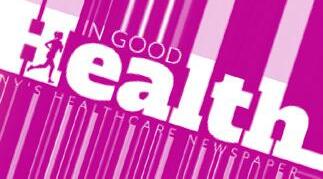


saying something else. That’s why most people never use the medication even after they get the prescription. If they’re in such extensive pain and they know death is imminent, they can take the control back. That’s very valuable,” she added.





Diagnoses such as ALS and dementia are not included as the medication must be self-administered by a lucid person. Slow-acting diseases restrict movement or affect the mind would not be included.



Compared with a terminal cancer patient, “Alzheimer’s presents a very different situation,” said Geoff Sugarman, national political strategist for Death with Dignity in Oregon, views medical aid in dying (MAID). “When they get to the point where this would be what they want, they wouldn’t be able to administer it. We are not advocating for expansion for dementia or Alzheimer’s, as they’d be incapable of self-advocacy.”
He said that about 25% to 33% of patients who obtain medication for assistance in dying never use it.



“It provides peace of mind so they know they can,” Sugarman said. “There are laws about proper disposal.”
Sugarman does not foresee a “slippery slope” scenario where MAID laws morph into euthanasia for people who are elderly or disabled or any push for someone who is sick to request MAID.





“This has never happened in 26







years of the existence of these laws for fraud or coercion,” he said. “It’s never happened because safeguards in these laws. You have to be terminally ill and diagnosed by two physicians and qualify.”

Currently nine US states (California, Colorado, Hawaii, Maine, New Jersey, New Mexico, Oregon, Vermont and Washington) and Washington, DC have MAID laws and Montana does through court ruling.

Right to Die in Canada Expands

In 2016, Canada’s medical assistance in dying criteria included only people with terminal illness. Five years later, it expanded to include incurable, but not terminal illness.
In March 2024, the law will also include people whose only condition is mental illness — one of the world’s broadest allowances for MAID.
“I don’t see this coming to the US,” said Geoff Sugerman, national political strategist for Death with Dignity in Oregon. “There’s no desire for our organization to expand to mental health. There are many kinds of suffering; this is for physical suffering who are on hospice and are suffering.”


Page 8 • IN GOOD HEALTH – Buffalo & WNY’s Healthcare Newspaper • September 2023 ALSO INSIDE Alzheimer’s U.S HospitalsAreGettingSafer orPatients P. Finally LowerDrugPrice B tWait… Just8%LackHealthInsura e aRecordLow P BFOHEALTH.COM SEPTEMBER2022 SUE95 Asidefromhigher iskoflung cance menwhosm kear mo p one o developearly impoten lowersp m ount andgreater iskofp os ate cancerandca di ascular disease ay e pe P.16 P T TLESLEEP MKIDHARMYOUNG S’BRAINS FREE D THECAREGIVE MEN&SMOKING BettertreatmentsforthosediagnosedwithAlzheimers areonthehorizon,say localexperts Q&AwithAmandaNobrega interim directoratCiticolineAlzheimer’sAssociationWNYChapter ApossibleAlzheimer’streatmentSeeAlzheimers Pages 10-12 ATRICS Physicia Fr d A ch inte imdivisio chief Ped trics is usses h st ble utine h m ontribut tokids’su c ssin sc o st e edu tio STROKE AreSchoolsSafe? Nineteenchildrenandtwoteacherswere killedUvinashootingatRobbElementarySchoolin alde Texas Askidsgearuptoreturn toour localschools,how safearethey? Page 13 BACK TO SCHOOL SPECIAL BFOHE LTH.COM AUG ST2022•ISSUE94ErieCounty HasanSTI ProblemGonorrheacasesareup56% syphilis casesdoubled problemisworse for peoplewholiveinZIPcodes 14214 and14211 Story onpage 7 � d Fac Today P � Fa ilyMeals WhyTheyre oImp rtant 1 � C mpCradleBe ch U itin P16 ALSO INSIDE Physici R b S wyer, odi ct th S okeC nt atth Gate V sc la In titut lk abou fi thin you now o k o abou it P.9 INSIDE:WELLNESSSPECIALISSUE IN MEDICINE Integ a omplem Fromreflexologyto Find13healthmodalities FREE J Rutko ki rologistwith UBMDUolog discusses ectile dysfunction‘It’s ftenaharbinger ofbadthings o ome, hesa sof the ondition ERECTILEDYSFUNCTION JAZZMEETTHE DOCTORP19 N May;agreat tim sfortheirincredible,tedandcontinuedwork CELEBRATING NURSES 13 14 2 IDE BFO EALT .C M MAY2022• ISSUE 1 FREE Anth ny D war, su gical on ologistwhospeciali es colonand ctalc patiethemultidisciplina AMULTIDISCIPLINARY PPROACHTOCANCER FREE BFOHEALTH OM APRIL2022• I SUE90 DanielSi ica isa neur ogist.He discu P kinso s disease deep brainstimul tion imp ov some o or ym P TREMORSDISEASEARKINSON’S MENTALHEALTH ■ Sign yo ne m nta health help■ Poorafbodyimag e tsteen m ntalhealth■ Ho poor m ntal health an decreaselong vi y HOWTOSLEEPBETTER Researchers theUniversi y BuffaloSchoolofNursingandRoswellP rk Comp ehensiv Canc Center e ondu tinganinsomniastudytohelpcan patientsgetabe ernight’ssleep PLUS:W i er AnnePalumbo authorofSm lists e entypesoffoodth tcanhelpyousleepbet Mostdietsa egea edto ard losing eigh Less tendowe hearabout ndividualstrying gain eight Anestim ed462 millionadultsw rldwide e unde weight WriterAmanda herwseyofTonawandtalksabout jou n y ogainweigh P.10 GOING ON A WEIGHTGAIN JOURNEY Children have been th o ghan awfullotinth pas twoyears online clas onstantstre s from familyfinanc s,workand choolchanges;ple coverage; ever-shifting COVID-19protocols;andfea ofth be n ha dtogo backto h con e tiona w BFOHEALTH.COM MARC 2 22• I SUE89 ALLABOUTKIDSPhysicianL cy D Mast and ea chiefofpedat icsand endocrin lo Ped t ics HOT HEALTHCARE ISSUES IN WNY Reach over 80,000 health conscious readers in WNY (based on 25,000 copies distributed) Call 716-332-0640 or email editor@bfohealth.com to request a media kit.
newspaper your
advertising choice
Q & A with Jessica Pirro
Head of Crises Services talks about suicide in Western New York and what her agency does to reduce the problem
By Brenda Alesii
The mere mention of the word suicide can strike fear in the heart of many people. At Crisis Services, located on River Rock Drive
in Buffalo, thoughts of suicide mean one thing: Even in one’s darkest moments, it is OK to talk about it. That sentiment comes into even clearer
DRIVERS WANTED
Local News Inc is now seeking to hire drivers to distribute copies of In Good Health – Rochester’s Healthcare Newspaper and 55 PLUS magazine in Monroe County. It’s not a regular job. Once or twice a month. No heavy lifting. The job consists of getting the monthly publication in our storage near Kodak and distribute it to various locations, mostly at doctor’s offices, hospital, healthcare centers and other high traffic locations. We provide a list of places that receive the paper regularly.

The job needs be performed during the day, roughly from 9 to 5 from Monday through Wednesday. Pick up is on Monday around 9 a.m. (once a month).
$14.20 an hour plus mileage allowance (30 cents per mile).
It amounts to $150 to $200 per job. Great for active retirees and for stay-at-home mom who have some free time.
For more information, call (585) 421-8109 and ask for Allison.
focus now as September is Suicide Prevention Awareness Month.
In Good Health recently spoke with Jessica Pirro, president and chief executive officer of Crisis Services, Erie County’s only 24-hour crisis services center. A Syracuse native who holds a Master in Social Work degree and has been at the agency for 24 years, Pirro oversees a staff of 98 employees.

Q. How prevalent is suicide in this area and how do you shine a light on this delicate subject?
A. It is useful to look at a yearby-year perspective of our deaths by suicide:
2018: 101
2019: 103
2020: 85
2021:72
2022: 90
We have seen a decrease during the pandemic years. COVID brought conversations about mental health into the forefront, helping to reduce the stigma and making it more comfortable to ask for help. In 2022, for example, we trained on awareness, intervention and services with 811 school personnel, 400 community members and 731 professionals from various disciplines. The Suicide Prevention Coalition and the suicide review team regularly monitor suicide rates, all in an effort to help with prevention.
Q. Who is most at risk and why?
A. The highest rate of suicide occurs with middle-aged white males; overall the rate is two-thirds men, women at one-third. We have had a slight increase in the rate of females taking their own lives over the last few years. In that same time frame, we have seen an increase in suicide by people in their 70s and 80s. For men, there is still some stigma in seeking services; they may feel the weight of historical and cultural expectations and some people, including veterans, have more immediate access to lethal means.
Q. What advice can you offer for an individual contemplating suicide or if there is concern about a loved one’s mental health?
A. There is hope. We can help people in those dark moments. I encourage individuals or their loved ones to call our Crisis Hotline day or night: 716-834-3131 or call 998, the national hotline. We cover five coun-
ties in WNY for 988; Niagara County crisis services cover the other three counties. You will speak confidentially with a specialist who knows how to help guide and support what you’re going through. We’re ready to help, no matter what. Our counselors will evaluate the situation, and help to put a safety plan in place. Part of our support includes referrals to other behavioral health care providers as well.
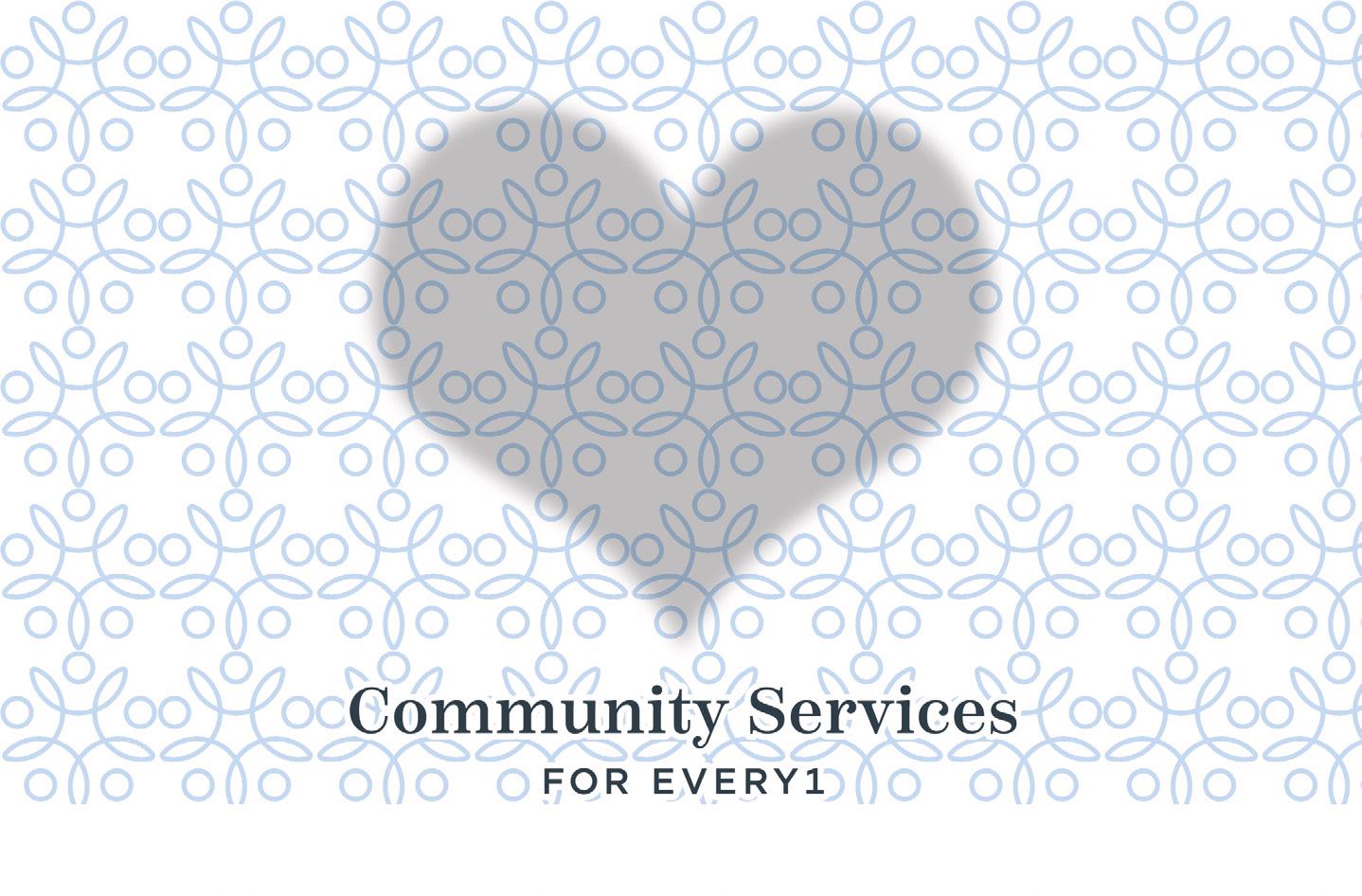
Q. Crisis Services offers much more than hotline services, correct?
A. We employ a mobile outreach team that responds around Erie County in pairs. They are licensed and qualified under New York state regulations and hold at least a master’s degree. The team evaluates the mental health crisis and sets a course of action. We are able to divert over 60% of our interventions from needing higher levels of care like hospitalization. Our goal is to keep individuals safely in the community. If there is a potential safety risk in the visit, we will partner with law enforcement during this critical, life-saving work.
Q. What are some of the typical warning signs of suicide?

A. Talking about taking one’s life; a feeling of hopelessness and helplessness; dramatic mood changes; a feeling they are burden to friends and family and withdrawal from normal activities.
Q. With your agency never taking a day — or an hour off — funding must always be in the forefront of your mind. Do you have a major fundraiser planned?
A. Yes! Our “Men Who Cook” fundraiser is back in a different format. It will be held on Oct. 25 at the Admiral Room, featuring professional chefs and food stations. More info on this fun event is at www.crisisservices.org.
Q. With the demands of this job, how do you decompress?
A. At Crisis Services we talk a lot about self-care. I’m lucky because I have an amazing family and colleagues that provide support. I’m very regimented about working out, which helps relieve the stress in this demanding work.
September 2023 • IN GOOD HEALTH – Buffalo & WNY’s Healthcare Newspaper • Page 9
A New Reason to Smile
With a desire to help the underserved dental communities since she was in dental school, Ashleigh Robinson has left her stationary dental office and now travels door to door to provide dental services to all who need it

Adoctor that makes house calls may seem like a thing of the past — but Ashleigh Robinson is doing just that.


But don’t call her for a fever or stomach issue. Robinson is a traveling dentist who works exclusively at the homes of her patients.
She is perhaps the only dentist doing this type of home visits in Western New York.
Born and raised in Buffalo, Robinson has made it her mission to make oral health care available to everyone in Western New York. With a desire to help the underserved dental communities since she was in dental school, Robinson has left her stationary dental office and now travels door to door to provide dental services to all who need it.
As founder and owner of AccommoDental, she caters to individuals that have trouble traveling or visiting a dental office. Her clientele includes those with mobility issues, emotional concerns and special needs.
“I want to help people with medically complex backgrounds gain access to dental services,” Robinson explained. “I saw a need for this type of service while I was working at ECMC. I realized while I was there
By Catherine Miller
that the best way to serve some people is in their home.”
Many patients of AccommoDental are the elderly that have difficulty traveling to a dental office and special needs individuals that are better served in a one-on-one setting. Robinson has also treated children and younger adults that have mobility limitations, cognitive impairments and phobias.
Access to oral health care for the elderly and disabled is not always easy and Robinson is aware of this first-hand.
With a sister who utilizes a wheelchair and many elderly relatives, she realizes that many offices are not handicapped accessible and the doorways and equipment are not manageable with wheelchairs and mobility devices. With AccommoDental, the care comes to your loved one wherever they may be in Buffalo and throughout the Western New York area whether at home, in a nursing facility or at an assisted living center.
AccommoDental is able to complete most dental services in the comfort of the patients’ homes. With a wide range of mobile equipment and devices, everything from a basic
cleaning, to X-rays, fillings, tooth extractions and even dentures can be completed at the patient’s house.
Wherever the patient is comfortable in their home is where the doctor will set up her equipment, whether it is a wheelchair, bed or recliner. Robinson brings a wide range of extension cords, a table and all else that will assist in turning a room in your home to her makeshift office for the patient’s procedures. Robinson does note that she can’t do it all.
“Some procedures take more elaborate equipment. For example, I cannot complete all extractions,” she said. “If you can go to the dental office, you absolutely should. But the majority of oral health care treatments can be done in the comfort of your home when that is necessary.”
Family members are welcome to be present at the appointment with the permission of the patient. Minors and those patients with guardians should have their guardian present at the initial appointment. Robinson will stay in contact with the guardians throughout the treatment period and will always welcome family members during her visits.
While the majority of the general public may be better served
at a traditional dental office where additional equipment is available, for those patients that cannot functionally travel to a dentist’s office, AccommoDental is ideal and available in most areas of Western New York.
“I have traveled throughout many of the counties in Western New York,” Robinson said. “If you are in need of my services the easiest way to determine if you are in my region is to contact me.”
AccommoDental is not able to directly accept insurance at this time. There are some dental providers that will reimburse you for the dental treatments and you can contact your providers to discuss the details of your policy. If reimbursement is possible AccommoDental will assist in the filing of the claim.
Robinson’s office can be contacted at 716-525-8228. You can listen to podcast, the ResiDental Movement, where she talks about her practice and hopes to encourage other dentists to take their dental skills on the road and assist in the home-to-home oral health care mission. You can also visit www.accommodental.com for additional information.
Page 10 • IN GOOD HEALTH – Buffalo & WNY’s Healthcare Newspaper • September 2023
SmartBites
By Anne Palumbo
The skinny on healthy eating
Whole Grain Quinoa Full of Healthy Surprises
Quinoa
Helpful Tips
Some quinoa needs to be rinsed to remove the bitter-tasting compound that naturally coats it. Although most packaged quinoa bought in the U.S. comes “prerinsed,” I always rinse mine under cold water for a few minutes, using a fine sieve. Also, quinoa is pretty high in oxalates, which may cause concerns if you have kidney issues. Cooked quinoa, stored in an airtight container, can last up to a week in the fridge.
(pronounced KEEN-
wah) is a whole grain whose popularity has skyrocketed in recent years. Beyond being delicious, versatile and easy to prepare, quinoa is so nutritious that NASA feeds it to crews on long space missions.
Considered a bona fide superfood by many, quinoa serves up a powerful mix of desirable nutrients, many of which have been linked to the prevention of disease.
Let’s take a look at four good reasons to embrace this healthy whole grain.
1. Higher in protein than most whole grains.
Quinoa not only packs a whopping 8-9 grams of protein per cooked cup, it delivers protein that’s “complete,” which is uncommon among grains. Complete proteins contain all nine essential amino acids (protein’s building blocks) that your body can’t make on its own. Feeling sluggish, weak, under the weather? You may not be getting enough protein.
2. Loaded with heart-healthy fiber.
Quinoa delivers 5 to 6 grams of fiber per cooked cup, putting a sizable dent into the recommended 25 to 30 total grams we should be eating daily. Fiber keeps us regular, lowers cholesterol levels, helps prevent spikes in blood sugar after eating and may help us live longer. Studies suggest that increasing your fiber intake—especially from whole grains—is associated with a reduced risk of dying from heart disease and some cancers.
3. Packed with important vitamins, minerals, and antioxidants.
Regularly eating quinoa can help meet your needs for a wide variety of vitamins, minerals and phytochemicals (antioxidants that reduce inflammation and promote
longevity). Quinoa’s top five include folate, manganese, magnesium, phosphorous and zinc, all of which come together to help build bones, keep our immune system humming, promote healthy cell growth (crucial during early pregnancy), manage blood pressure and so much more.
4. Great for people with gluten intolerance.
Unlike most whole grains (though quinoa is technically a seed, like buckwheat), quinoa is gluten-free. What sets it apart from some gluten-free substitutes in grocery stores—many of which are made from refined starches and may have added sugar, fat, and salt—is its bounty of nutrients coupled with its paucity of fat, sugar, sodium, and cholesterol. Go, quinoa! Go, happy gut!

Anne Palumbo is a lifestyle columnist, food guru, and seasoned cook, who has perfected the art of preparing nutritious, calorie-conscious dishes. She is hungry for your questions and comments about SmartBites, so be in touch with Anne at avpalumbo@aol.com.

QUINOA SALAD WITH OLIVES, CUCUMBERS, AND CHERRY TOMATOES
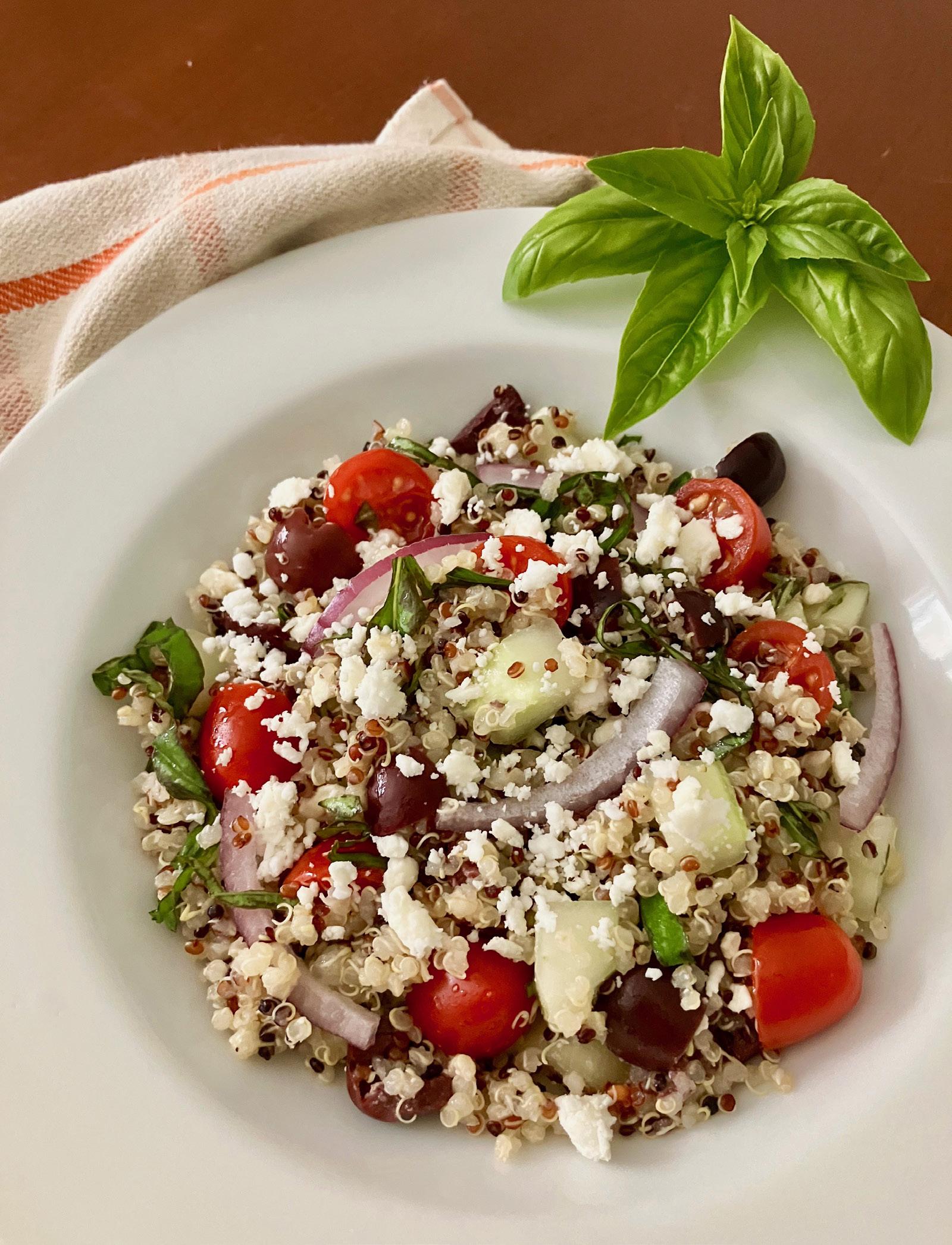
Serves 5-6
1 cup quinoa, rinsed, drained
2 cups water
½ cup pitted Kalamata olives, quartered
½ small red onion, thinly sliced (optional)
1 cup cherry tomatoes, halved
1 medium cucumber, peeled, seeded, diced
1 cup crumbled feta, divided ½ cup basil, slivered juice of 1 lemon
1/3 cup olive oil
2 teaspoons Dijon mustard
1 clove garlic, minced ½ teaspoon kosher salt
¼ teaspoon coarse black pepper
Nurses Night Returns to Buffalo
Afun night is in store for any healthcare worker to enjoy.
“Nurses’ Night — Celebrating ALL Healthcare Heroes” will take place from 5-9 p.m., Wednesday, Oct. 11 at the M Hotel ballroom (formerly Millennium Hotel next to the Walden Galleria).

Organizer Paul D. Maurer has put together healthcare vendors, a marketplace of food, wine, desserts, fine jewelry, apparel, games, stage entertainment and crafts.
The event is presented by main sponsor Trusted Nurse Staffing.
The last Nurses’ Night was in
May 2019.
“We wanted to continue this successful Western New York event every year, but COVID-19 altered our plans,” said Maurer. “Now, we have a much bigger event because we are also honoring all the healthcare heroes who got us through the pandemic!”
Now through Sept.11, people can send nominations for the award. To nominate, go to WHTT.com/contests and fill out the questionnaire. Cash prizes to the top “hero” will be $500; second prize, $250; and third prize, $150 in gift certificates. Winners will
be announced and awarded to the top vote-getters on the Trocaire College stage on Oct. 11.
Tickets for Nurses’ Night are $9.50 and can be purchased at NursesNightofCelebration.com.
Sponsors include Kaleida Health, CeraVe, McGuire Health/Absolut Health, UnitedHealthcare, BestSelf Behavioral Health, Basil Family of Dealerships and Bry Lin Hospital.
Media sponsor is Classic Hits 104.1 (WHTT-FM) and will feature morning personality Laura Daniels hosting the evening’s event with music by DJ Jickster.
1. Place the quinoa in a saucepan with the water; heat to a boil. Reduce to a simmer, cover and cook until all the water is absorbed (about 15 minutes). Set aside.
2. Place the olives, onion, cherry tomatoes, cucumber, ¾ cup feta and basil in a large bowl. Add quinoa; stir gently to combine.
3. Whisk together the lemon juice, olive oil, mustard, minced garlic, salt and pepper. Pour over the quinoa mixture; toss to combine. Let stand at room temperature for an hour before serving. Refrigerate for longer keeping. Stir gently before serving. Sprinkle each serving with remaining feta crumbles.
September 2023 • IN GOOD HEALTH – Buffalo & WNY’s Healthcare Newspaper • Page 11
Five Places to Try Salt Cave Therapy

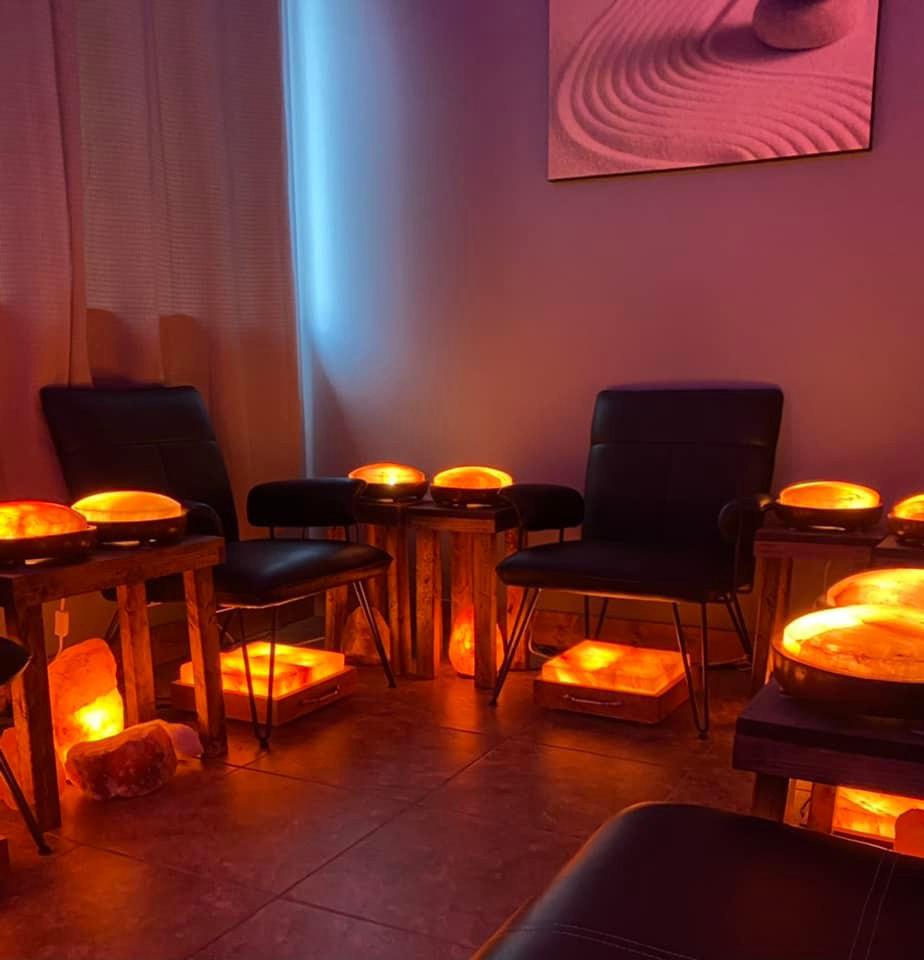
Western New York boasts a variety of businesses providing dry salt therapy and salt cave therapy
Halotherapy, also known as dry salt therapy and salt cave therapy, is an all-natural treatment with benefits ranging from improved lung function and skin health to increased immunity. It reduces stress and detoxifies your mind and body.

Here are the five best salt caves to try in Western New York, each offering its own unique spin on the halotherapy experience.
1. Serenity Salt Cave – Amherst
“We created our tranquil environment with the vision of serenity and healing, while maintaining the beauty of the Himalayan Mountains,” states the business’ website.
SSC also offers ionic foot detox, infrared sauna sessions and massage
By Amanda Jowsey
therapy as approaches to natural healing.
You can even have private parties and events for bridal showers, birthdays or any other special days you want to celebrate by honoring your mind, body and spirit. They can help you put together a “private, creative and totally unique event package for you and your group.”
The business hosts a variety of classes and events like salt cave yoga pop ups, weekly Thursday yoga classes and classes for managing stress and seasonal changes.
Individual public salt cave sessions are $35 or $199 a month for unlimited individual sessions. Private sessions (up to four people) costs $119.
Serenity Salt Cave
2070 Eggert Road
Amherst, 14226
serenitywny.com
2. AURA Salt Cave and Wellness — East Amherst
My first halotherapy experience was at AURA. I found it to be one of the most healing spaces in our area.
Owner Kelly DeBerg and her staff are caring, down to earth and can help you find the best all natural products for your holistic needs — from skincare to chakra balancing.
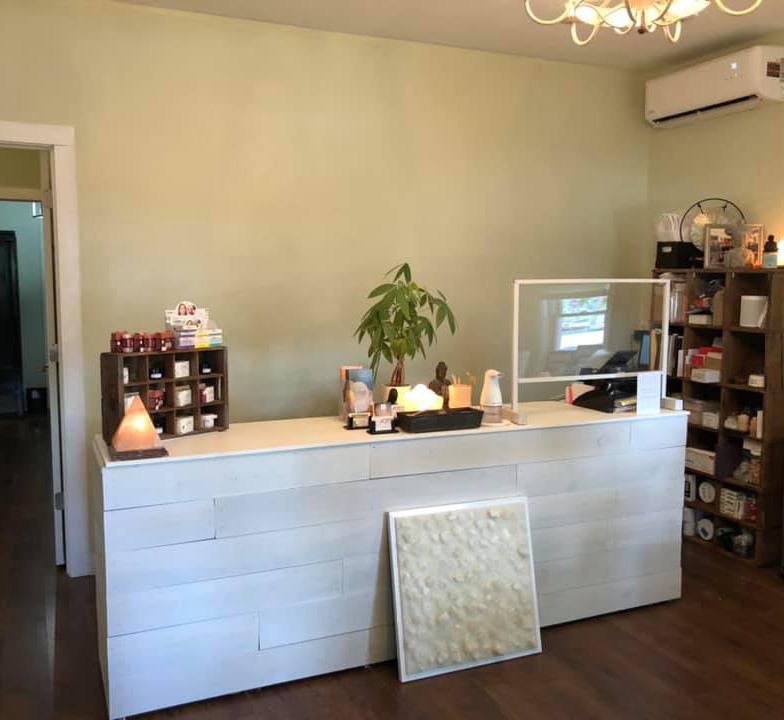
You can browse and shop its carefully curated selection of all natural Himalayan pink salt products, new age and metaphysical items including gemstones and crystals, CBD (teas, tinctures, capsules, topicals, waters), essential oils and diffusers, bath and body products, and so much more.
“We offer services unique to the alternative health and wellness community. Our focus is on all natural and holistic services for overall
well-being of mind, body and spirit. Our mission is to offer a natural, holistic and calm environment where treatments are used to create a safe, drug-free alternative to provide relief and improve overall wellness for all ages,” DeBerg said.
AURA Salt Cave and Wellness 6429 Transit Road, Suite 1 East Amherst, 14051 AURAsaltcave.com
3. Southtown Salt Cave –Hamburg
The owners of Southtown Salt Cave, Pam and Mike Toole, are registered nurses who understand the benefits of medicine as well as an appreciation of complimentary holistic health options.
Pam is also a psychic medium and reiki master.
Page 12 • IN GOOD HEALTH – Buffalo & WNY’s Healthcare Newspaper • September 2023
Serenity Salt Cave – Amherst
Southtown Salt Cave – Hamburg
Hearth & Haven Therapeutics – Lewiston
AURA Salt Cave and Wellness — East Amherst
They offer classes and workshops on a variety of wellness topics including mediumship and psychic discovery, essential oils, reiki certification, chakra education, Tibetan and crystal sound bowl healing, tarot in the cave, meditation and salt cave massages.
Southtown Salt Cave
140 Pine St. Hamburg, 14075 southtownsaltcave.com
4.
As described on its website, this is “Ellicottville’s finest spa and only salt cave. Stop in, take some time for yourself and catch your breath.”
Massage therapist and owner Tracy Draper was introduced to the holistic concept of halotherapy in 2013 and a year later, opened “North America’s fourth authentic, European-built Himalayan salt cave in Ellicottville.”
This Spa is in a gorgeous location surrounded by amazing little shops and dining spots in the heart of Ellicottville and ski valley. They offer the salt cave experience, infrared sauna, massage, foot treatments, glows and facials.

Ellicottville Salt Cave Halotherapy Spa
32 W. Washington St. Ellicottville, 14731 ellicottvillesaltcave.com
5. Hearth & Haven Therapeutics

– Lewiston
Its website describes this place as “Your haven for personal healing, rejuvenation, and release! As your sanctuary against the stresses of daily life, we offer a quiet respite against the hustle of modern living. Your peace is our priority.”
This holistic wellness center, located in the beautiful village of Lewiston, is just a short drive from both Buffalo and Niagara Falls. While you’re in the area, take a walk through nature at Artpark down to the Niagara Gorge for more natural healing benefits after your session.
Hearth & Haven Therapeutics
704 Center St. Lewiston, 14092 hearthandhaventherapeutics.com
September 2023 • IN GOOD HEALTH – Buffalo & WNY’s Healthcare Newspaper • Page 13
Ellicottville Salt Cave Halotherapy Spa, Ellicottville
Ellicottville Salt Cave Halotherapy Spa, Ellicottville
Exercise Beneficial for People Diagnosed with Alzheimer’s
By Deborah Jeanne Sergeant
Alzheimer’s is an incurable degenerative disease of the brain. However, people diagnosed with Alzheimer’s can benefit from exercise.
A growing body of research indicates that in addition to offering some protective advantages, regular exercise can also slow the disease’s progression for those who have been diagnosed.
A 2022 study indicates that exercise helps promote the level of a brain-protective protein that can delay onset of Alzheimer’s and other dementias and slow the progression of the disease in those diagnosed.
The study’s author, Kaitlin Casaletto, an assistant professor of neurology in the Memory and Aging Center at the University of California San Francisco, said that other studies show physical activity lowers the chances of dementia by 30% to 80% but researchers still don’t know exactly why except that it may have to do with synaptic functioning.
“Everybody — no matter what stage of Alzheimer’s — should do as much as they can,” said neurologist Kinga Szigeti, director of UB’s Alzheimer’s Disease and Memory Disorders Center, UBMD Neurology and the Jacobs School of Medicine and Biomedical Sciences and associate professor at Jacobs School. “If it comes down to just walking around the room or doing exercises in bed, even that is better than nothing.”
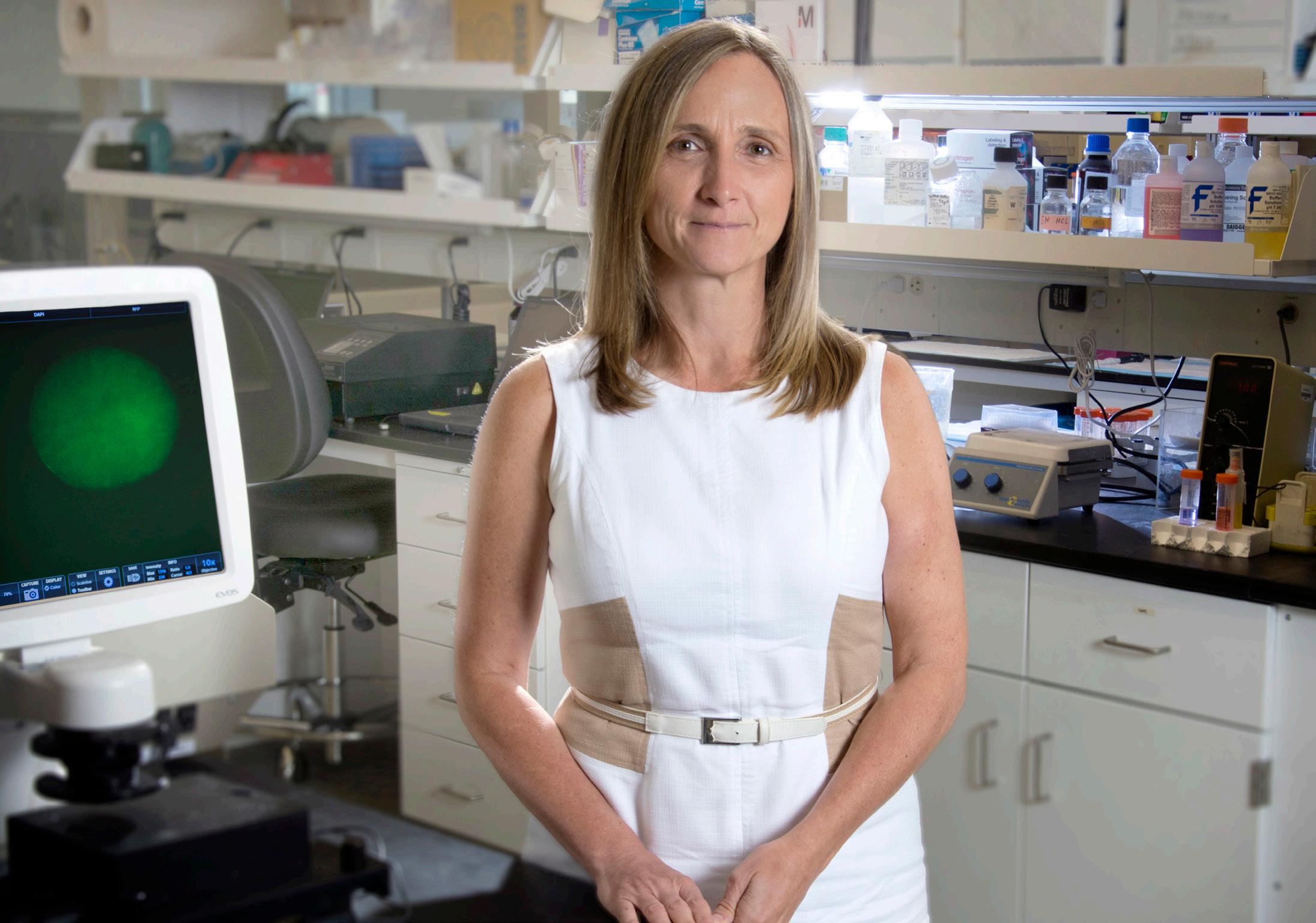
Szigeti referred to a couple of controlled studies about people with moderate stage Alzheimer’s. A con-
trol group did some baseline activity typical for a day program. The other group engaged in a structured exercise program with different activities.
“Over a three-month period, the structured group was almost as efficacious as the medication they prescribe,” Szigeti said. “They interacted more, talked more and were able to do more independently. You can decide to stay healthy or slow dementia down as much as possible once diagnosed. It’s not just for those diagnosed but anyone. We preach about physical exercise all the time.”
In addition, choosing to exercise can help fight the depression that often accompanies dementia. Exercise gives a sense of control.
Szigeti recommended engaging in 150 minutes a week of enjoyable physical activity. Especially helpful
are activities that stimulate many areas of the body, like tai chi, yoga or pickleball. She added that the social aspect of being part of a group is also beneficial.
These recommendations should especially interest people who have a genetic predisposition for developing Alzheimer’s, as improving lifestyle may help mitigate genetic risks.
Carleara Weiss, registered nurse, said, “Exercising regularly improves cardiovascular health, reduces blood pressure, and makes the blood vessels stronger.”
Weiss is a research assistant professor at UB’s Center for Nursing Research. She
joined the CNR after two years as a postdoctoral associate at the UB School of Medicine and Biomedical Sciences Division of Geriatric and Palliative Medicine.

She added that exercise also
“Alzheimer’s
prevents deterioration of muscle and bone, which leads to more dependence on others.
“Alzheimer’s is a progressive disease,” Weiss said. “Loss of independence is a critical factor. Exercising regularly is one way to prevent that.”
Alzheimer’s attacks the hippocampus. Weiss said that regular exercise improves brain function of the hippocampus, which improves memory and maintains its function for a longer time.
The exercise does not need to be intense to offer significant benefits.
“A milestone study done said women who were doing what’s considered moderate to high intensity exercises were 90% less likely to develop Alzheimer’s and those who got it got it an average of 12 years later,” said Joe Fox, personal trainer, certified functional strength training coach and owner of TrainSMART Personal Training in Buffalo. “Cognitive function and brain health and delaying Alzheimer’s and dementia is right in the wheelhouse of a properly designed and executed fitness strategy.”
He said that it’s commonplace for people in generally decent health to experience an injury, become sidelined from activity, and then never get back to an active lifestyle.
“Once they’re not moving anymore, their risk of Alzheimer’s increases significantly,” Fox said. “This is real life. People you see in the neighborhood and in church and the grocery store, it’s a real thing. When you stop moving, you start dying. Movement is an amazing thing.”
Richard Derwald, fitness trainer consultant for Erie County Senior Services, wholeheartedly believes that “exercise is the best thing an Alzheimer’s patient can do to slow the progression of the disease.”
He encourages people to engage in resistance exercises and aerobic exercises on alternating days.
“If you do it only occasionally, you’ll pull your shoulder and hurt yourself,” he said.
Page 14 • IN GOOD HEALTH – Buffalo & WNY’s Healthcare Newspaper • September 2023 Alzheimer’s
“We preach about physical exercise all the time,” says neurologist Kinga Szigeti, director of UB’s Alzheimer’s Disease and Memory Disorders Center, UBMD Neurology.
Registered nurse Carleara Weiss is a research assistant professor at UB’s Center for Nursing Research.
is a progressive disease,” Weiss says. “Loss of independence is a critical factor. Exercising regularly is one way to prevent that.”
“Everybody — no matter what stage of Alzheimer’s — should do as much as they can”
Neurologist Kinga Szigeti, director of UB’s Alzheimer’s Disease and Memory Disorders Center, UBMD Neurology and the Jacobs School.
Alzheimer’s
Brain Protective Foods
By Deborah Jeanne Sergeant
Unfortunately, there’s no silver bullet for brain health.
Avoiding Alzheimer’s and other forms of dementia isn’t as simple as, “Eat this and you’re guaranteed to never have dementia.”
But diet does play a role in supporting brain health.
“In any case, we do have some good data and information,” said neurologist Kinga Szigeti, director of UB’s Alzheimer’s Disease and Memory Disorders Center, UBMD Neurology and the Jacobs School of Medicine and Biomedical Sciences and associate professor at Jacobs School. “One thing we know that’s helpful is controlling vascular risk factors. As these blood vessels age, they’re more likely to have leaks, blood clots and sclerosis. If we can
keep blood vessels healthier, we have more blood flow to the brain. If someone has controlled vascular risk factors, they have Alzheimer’s later or not at all. Or if they have it, it progresses slower.”

She said that along with an active lifestyle, patterning the diet after the American Heart Association’s heart healthy eating plan offers benefits for supporting brain and heart health. The organization’s website said that diet promotes, “a wide variety of fruits and vegetables; whole grains and products made up mostly of whole grains; healthy sources of protein (mostly plants such as legumes and nuts; fish and seafood; low-fat or nonfat dairy; and, if you eat meat and poultry, ensuring it is lean and unprocessed); liquid non-tropical
vegetable oils; minimally processed foods; minimized intake of added sugars; foods prepared with little or no salt; limited or preferably no alcohol intake.”
A “whole food” is one with little or no refining or processing. It should also contain no artificial additives or preservatives. For example, a serving of fruit should be a whole piece, such as a peach, but not a canned peach. But a peach canned in natural juices is a better choice than in heavy syrup. And any produce is a better choice than items like chips or candy.
“Brain neurons feed off of ketones and glucose,” said Debra Kostiw, certified master dementia strategist and owner of Answers About Alzheimer’s, Inc. in Rochester. “Your brain prefers the ketones over the glucose. If we can reduce glucose and increase the ketones, the brain is happier, healthier and performs at a higher level. We need to reduce carbs like sugars and processed stuff. They are what ‘gunks up’ the brain. If simple carbs are there, it’ll eat those first and faster.”
Whole grains are complex carbohydrates. Whole grain bread (not just “wheat bread” that’s dyed with caramel food coloring to look darker), popcorn, oatmeal, and whole grain crackers such as Triscuit are a few examples. But watch out for added salt, flavoring agents and sugar. Making your own foods, such as air popped popcorn instead of bagged popcorn can help you control what’s in your food.
Kostiw said that one of the ways to increase the ketones is with pure coconut oil. But slowly introduce it, as “it can be tough on the digestive
system. I tried it and felt better half an hour after I took it. I felt a little clearer.”
Variety is key to overall health and by extension brain health. In addition to focusing on healthful foods, selecting a wide array of those foods supports a healthy brain.
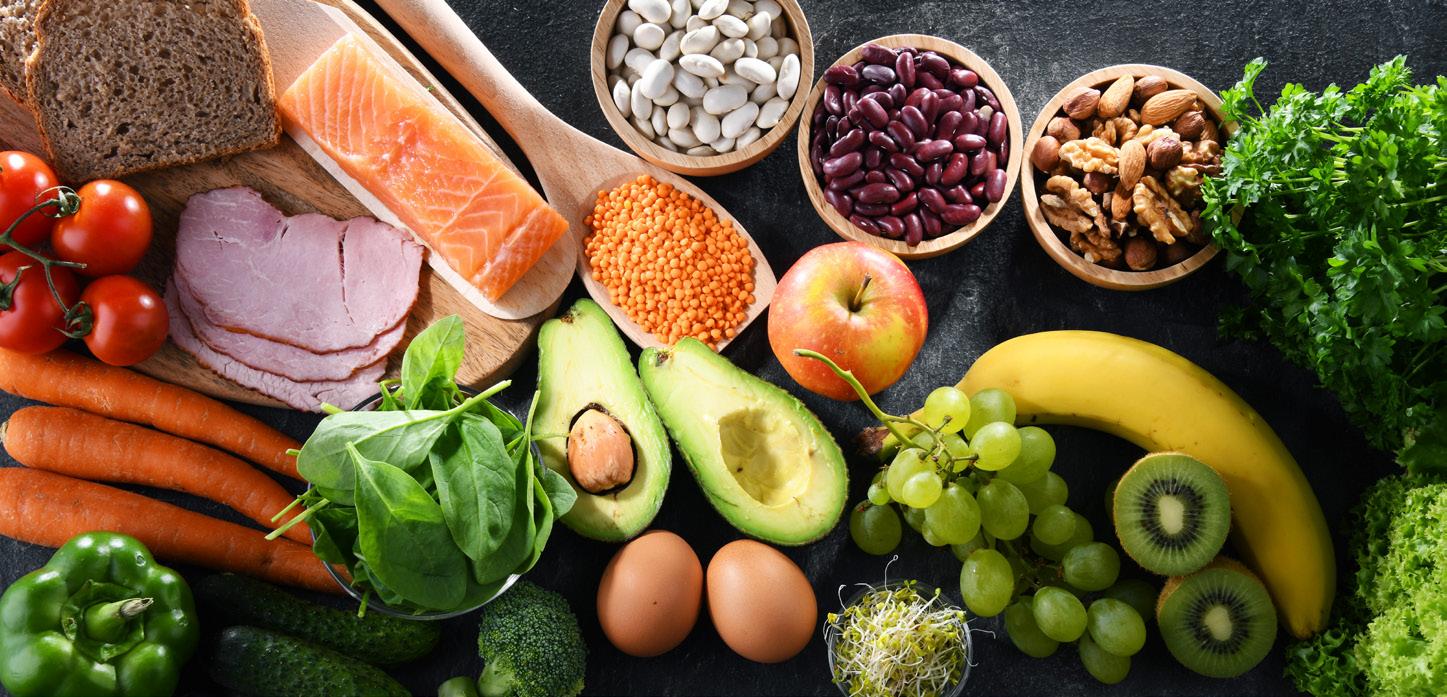
“We know that foods like dark leafy green vegetables are high in folate,” said Justine Hays, registered dietitian and senior Snap-Ed nutritionist for Cornell Cooperative Extension Niagara County in Lockport. “Those can be healthful for the whole body and help our mind function.
“Lean protein sources can be another great choice as they give the body protein without too much cholesterol. They keep the heart healthy and keep good blood flow to the brain.”
This can include boneless, skinless chicken breast, for example. But not all sources of fat are unhealthful for the body and brain. Hays noted that “omega-3 fatty acids have been linked to supporting brain and cardiovascular health. You can get those from fatty fish like salmon, tuna, sardines. You can get them from flax seeds, other seeds and nuts. It shows how important a variety of protein sources is. It’s key in terms of overall health.”
As for sources of grains, try to make at least half of those whole grain, such as brown rice, whole wheat pasta, popcorn, oatmeal, barley, and whole wheat bread.
“This improves cardiovascular health,” Hays said. “An overall healthy diet helps with overall brain health as well.”
September 2023 • IN GOOD HEALTH – Buffalo & WNY’s Healthcare Newspaper • Page 15
Golden Years
Here's 8 Habits That Could Lengthen Your Life
Eight healthy habits could add years to your life.
A new study of more than 700,000 U.S. veterans breaks down the habits that when adopted by middle age, can help someone live substantially longer than folks who don't have these habits.
These are the big eight:
• Be physically active.
• Don't smoke.
• Don't get addicted to opioids.
• Don't binge-drink on a regular basis.
• Eat a healthy diet.
• Manage stress.
• Practice good sleep habits.
• Maintain positive social relationships.
The study found that men with all those habits at age 40 could live an average of 24 years longer than men who have none of them. Women could gain an additional 21 years compared to their peers who have none of these habits.
The findings were presented in July at a meeting of the American Society for Nutrition, in Boston.
“We were really surprised by
just how much could be gained with the adoption of one, two, three or all eight lifestyle factors,” said study presenter Xuan-Mai Nguyen, a health science specialist at the U.S. Department of Veterans Affairs and student at Carle Illinois College of Medicine in Urbana, Illinois.
“Our research findings suggest that adopting a healthy lifestyle is important for both public health and personal wellness. The earlier the better, but even if you only make a small change in your 40s, 50s or 60s, it still is beneficial,” Nguyen said in a meeting news release.
Researchers used data from medical records and questionnaires collected between 2011 and 2019 from more than 719,000 participants in the VA's Million Veteran Program. This included adults ages 40 to 99 and included more than 33,000 deaths during follow-up.
Low physical activity, opioid use and smoking had the biggest impact on life span among the study participants. These were associated with a 30% to 45% higher risk of death during the study period.
Stress, binge-drinking, poor diet and poor sleep habits were each linked to about a 20% increase in the risk of death. A lack of positive social relationships was associated with a 5% increased risk of death.
Researchers said their findings highlight the role of lifestyle factors in chronic diseases such as Type 2 diabetes and heart disease that lead to premature disability and death. These results also help quantify the degree to which healthy lifestyle choices can help people reduce their disease risk and live longer.
“Lifestyle medicine is aimed at treating the underlying causes of chronic diseases rather than their symptoms,” Nguyen said. “It provides a potential avenue for altering
High-Intensity Interval Training Offers Cardiovascular Benefits
By Deborah Jeanne Sergeant
You may love high-intensity interval training for its quick calorie blast. However, HIIT also provides benefits to your heart.
“I have no doubt that there are heart health benefits from HIIT,” said Joe Fox, personal trainer, certified functional strength training coach and owner of TrainSMART Personal Training in Buffalo. “The question is, ‘How do you define HIIT?’ And it comes down to strategy. Do people have the right program for them? Is it safe? Do they have a foundation for fitness and the right flexibility and mobility? Do they have high quality movement patterns so they’re moving more intensely and moving well so they get the benefits of heart health while staying safe? It’s very relative to the person.”
Of course, someone who’s sedentary should not engage in HIIT, as it’s pretty intense. HIIT involves working as hard as possible for 15 seconds at a physical movement, such as jumping jacks, riding a stationary bike or running on a treadmill and then taking a break for 10 seconds before engaging in a different activity. The times vary, depending upon the HIIT program. Some involve working hard for 30 seconds and rest for 30. The whole session could be as short as 15 to 20 minutes.
certain person,” Fox said. “When you say, ‘Is it appropriate for that person,’ it depends on the skill of the person who designed the program. The rarest and best skill is assessment.”
HIIT is definitely a hit for timecrunched people who cannot cram in hour-long workouts into their schedules. But it may not be good for many people to work out with HIIT daily because of its intensity.
“It’s important to think about your own situation when deciding whether to do HIIT or steady state cardiovascular exercise,” said Kerri Howell, certified personal trainer, nutrition coach and owner of The Hourglass Mom in the Rochester area. “HIIT can be a big bang for your body’s buck, but it could come
the course of ever-increasing health care costs resulting from prescription medicine and surgical procedures.” While adopting the healthy lifestyle factors had a smaller impact for those who were older, that impact still was significant.
“It is never too late to adopt a healthy lifestyle,” Nguyen said. Although the study can't prove cause and effect, the findings align with a growing body of research supporting the role of lifestyle factors in preventing chronic diseases and promoting healthy aging.

Findings presented at medical meetings are considered preliminary until published in a peer-reviewed journal.
at the risk of injury. And if all you do are high-intensity workouts, you are only working on one component of cardiovascular conditioning, ignoring endurance.”
She added that HIIT may lead to burnout. She advised mixing up fitness with a combination of low-intensity, mid-intensity and high-intensity workouts throughout the week as time permits.
Austyn Affronti, president of Affronti Fitness in Rochester, also said that combining HIIT with other exercise routines provides the most benefit.
“HIIT should be interchangeable with your workout but not every day,” he said.
He added that in addition to cardiovascular benefits, the biggest plus of HIIT is its long-term calorie burn.
“What it does is create a massive demand for oxygen for cells,” he said. “It’s the post-exercise oxygen effect. For the next eight to nine hours, your cells are demanding extra oxygen so you’re burning calories long after the workout instead of during the workout.”
HIIT also doesn’t burn muscle as long bouts of cardio tends to do. So, “for muscle retention, it’s better,” Affronti said.
For older adults, engaging in HIIT depends upon person fitness and how high the person scales the intensity. Richard Derwald, fitness trainer consultant for Erie County Senior Services, warned people who don’t currently work out to ease into HIIT.
more aerobic than anaerobic,” he says of HIIT.

“Walking three flights of stairs could be a very valuable and appropriate part of a HIIT program for a
“It’s more aerobic than anaerobic,” he said. “You can control the number of reps and speed. If you’re in a group you might try to keep up with the group, which you don’t want to do if you’re out of shape or older.”
Page 16 • IN GOOD HEALTH – Buffalo & WNY’s Healthcare Newspaper • September 2023
Richard Derwald, fitness trainer consultant for Erie County Senior Services: “It’s
“I have no doubt that there are heart health benefits from HIIT. The question is, ‘How do you define HIIT?’ And it comes down to strategy.
Joe Fox, personal trainer, certified functional strength training coach and owner of TrainSMART Personal Training in Buffalo. “
5
Things You Should Know About Heart Health
By Ernst Lamothe Jr.
The heart remains a remarkable organ at the center of our bodies that provides life and vitality.
The biological marvel is responsible for pumping blood and oxygen through our bodies. Ensuring heart health can be paramount to overall well-being even with healthy individuals.
That was the case recently when Los Angeles Lakers superstar Lebron James’ son, Bronny, suffered a cardiac incident. While details of the situation remain private, it shows the importance of having your heart health checked, recognizing family history and taking care of yourself. One person dies every 33 seconds from cardiovascular disease, according to the Centers for Disease Control and Prevention.
“Heart disease is the No. 1 killer and it is something that we have a lot of control over. There are so many things we can do to prevent issues and have a positive impact on your heart,” said cardiologist Anne Curtis, distinguished professor of medicine at the University at Buffalo.
Curtis talks about five essential topics with the heart including the significance of heart health, common symptoms of cardiac issues and dispelling myths.
1.Heart conditions
Often called the engine of the body, a healthy heart ensures the
efficient delivery of oxygen and nutrients to all cells, tissues and organs and maintains their proper function. A robust cardiovascular system contributes to increased energy levels, a stronger immune system and an overall enhanced quality of life. On the other hand, neglecting heart health can lead to a host of serious conditions including heart disease, heart attacks and strokes.
Recognizing the early signs of potential heart problems is crucial for prompt diagnosis and effective treatment. Common symptoms include chest discomfort, which manifest as a sensation of pressure, squeezing or pain in the chest. In addition, shortness of breath during mild physical activity or while at rest could be indicative of heart problems.
“You should also look out for fainting without any warning. That may be an indication that something is going on that you need checked,” said Curtis. “Sometimes pain or discomfort may radiate from the jaw and to the arm when you start feeling symptoms. You also want to watch if you feel like your heart is skipping a beat or racing too quickly.”
2.Myths
Many times people don’t take potential heart issues seriously because of various myths. The notion that only older adults are at risk has been proven incorrect because heart
U.S. Heart Disease Death Rates Have Fallen Sharply in Past 30 Years
Fatal heart disease in the United States dropped about 4% a year between 1990 and 2019, but Americans need to quit smoking, drinking and overeating or those gains could be wiped out, according to new research.
The declining rates of fatal heart disease have stalled, according to the research from Rutgers University-New Brunswick in New Jersey.
“The overall numbers are good.
We saw a substantial decline in deaths from all types of coronary heart disease for both females and males,” said study lead author Cande Ananth, chief of the division of epidemiology and biostatistics in the department of obstetrics, gynecology and reproductive sciences at Rutgers Robert Wood Johnson Medical School.
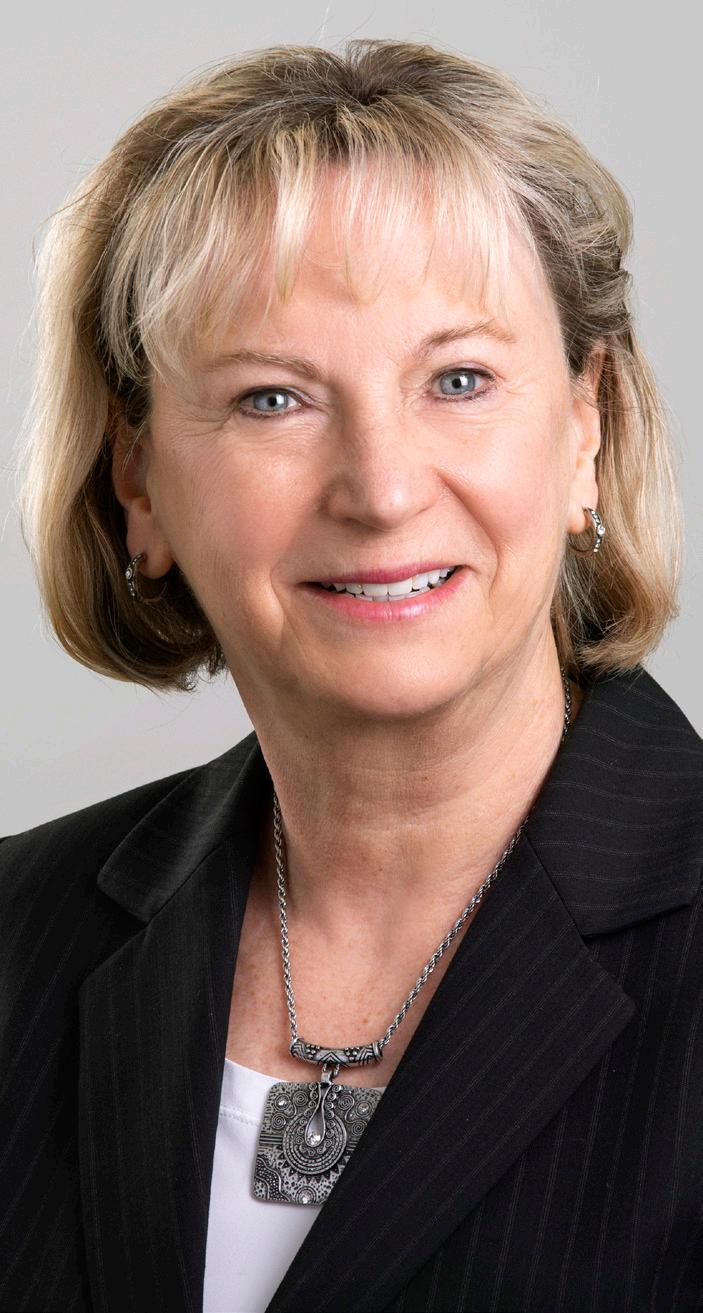
“However, because we examined how these three modifiable risk
issues can affect people of all ages, including young adults and even children.
Another myth involves heart disease affecting only men.
“People don’t realize that heart disease is the leading cause of death for men and women. Women are equally susceptible,” said Curtis.
3.Unhealthy habits
Curtis talks about eliminating one habit which she believes would universally decrease cardiac death and worldwide — smoking. The addictive habit damages blood vessels, increases the risk of plaque buildup and contributes to heart disease.
“If I had the power to wave a magic wand and either stop people from starting to smoke or convince them not to smoke that would be the largest factor in improving the issue nationwide because of the damage smoking does to your heart,” said Curtis.
A diet high in saturated and trans fats, salt and sugar can also contribute to high blood pressure, obesity and cholesterol imbalance. A lack of physical activity or overall sedentary lifestyle weakens the heart and cardiovascular system. Regular exercise promotes circulation, strength and overall heart health.
4.Lebron James’ son
Prioritizing heart health is a fundamental aspect of maintaining overall well-being. Understanding the symptoms and addressing the factors that contribute to cardiac issues continues to be an essential step toward a healthier heart. When LeBron James’ son had a cardiac arrest, it shocked the sports world and the casual observer.
“People don’t realize that even someone athletic can have a cardiac incident without contact. This was different from what happened to Buffalo Bills’ player Damar Hamlin where a sudden violent blow to the chest caused his cardiac arrest. But Bronny is very fortunate because if
they had not shocked his heart back into rhythm he might not have survived,” added Curtis.
5.Positives
As Curtis mentioned, many heart ailments are preventable because it deals with an individual’s everyday habits. There are various good habits that she suggests everyone incorporate into their lives.
“I tell patients that you must keep a low-fat, lean mean diet that features a good amount of fruits and vegetables,” she said. “Eating this way helps keep your cholesterol at a good level. I also recommend exercising because it can help you control your weight and blood pressure. Physical activity can help you have a strong heart.”
saw a 4% annual decline during those years.
Those declines, however, slowed significantly between 2011 and 2019. People born after 1980 were even at slightly increased risk of dying from coronary heart disease at any age than people from the previous generation, the researchers said.

Future advances in treatment could continue reducing fatal heart disease, but lifestyle modifications are also important: Eliminating smoking, drinking and obesity would have prevented half of the deaths observed during the study period, the authors said.
A bright spot is that tobacco usage is trending downward, with the percentage of smokers falling from 26% to 14% during those years.
factors affected mortality rates, we can see that there is room for considerable improvement,” he said in a Rutgers news release.
Among people aged 25 to 84, deaths from heart disease fell from more than 397,000 deaths in 1990 to about 237,000 in 2019, even while Americans' median age increased from 33 to 38, the researchers found.
Among men, the death rate dropped 3.7% a year, while women
Yet, obesity rates rose sharply from 12% in 1990 to 43% in 2019. Alcohol use also rose slightly during the study period.
Besides reduced tobacco use, researchers credited cholesterol-lowering statins and better diagnostic tests with the reduction in heart deaths.
The study findings were published recently in the American Heart Journal.
September 2023 • IN GOOD HEALTH – Buffalo & WNY’s Healthcare Newspaper • Page 17
Cardiologist Anne Curtis is a distinguished professor of medicine at the University at Buffalo.
CDC: 28% of Americans Over 65 Will Fall This Year
Experts provide tips on how not to be part of this group
According to the Centers for Disease Control and Prevention, 28% of Americans 65plus will fall this year.

The National Institutes of health reports, “Falls in older adults are a common occurrence and may lead to serious injuries [like head injury
By Deborah Jeanne Sergeant
and fractures]. Recurrent falls are also frequent and are responsible for significant morbidity and mortality in older adults.”
The consequences of falling are great for people who cannot rise and lie on the floor injured for hours or even days. What often happens after
a fall and serious injury is that older adults remain less active because they’re recovering from the fall. Or they choose to reduce their activity level because they fear another fall injury.
Reducing activity level also leads to greater dependence upon others for activities of daily living. Ideally, preventing falls is better than trying to introduce fall reduction measures after a fall has occurred. This can — and should — begin much earlier than when a person begins to have balance and strength issues limiting mobility and contributing to falls.
“When people are younger, they want to look good and have the sixpack abs. But as we get older, how we feel and how strong we are and how well we function and can we do what we need and want to do becomes incredibly valuable,” said Joe Fox, personal trainer, certified functional strength training coach and owner of TrainSMART Personal Training in Buffalo.
Starting early and remaining active can help prevent falls as one ages. Any exercise can benefit the body. However, exercising to avoid falls includes a few different aspects of fitness. Maintaining muscle mass can help people stay on their feet by allowing them to catch themselves before a fall. Staying agile and with good balance can help in this aspect as well. In case of a fall, those who exercise will likely avoid serious injury.
“Specifically, load-bearing exercises or resistance training or lifting weights stimulates bone density growth,” Fox said. “But just as important as building bone is actually changing the shape of bone. It’s my understanding that the trabecular column when the muscular skeletal system is strategically and safely loaded, you build bone and change the shape of bone in a way that’s beneficial for preventing injury when falling.”
If fitness has been on the back
burner for a while, it’s important to ask a physician for clearance before embarking on a new routine.
Other factors can increase the risk of falls, especially with age-related changes. For some people, medication can cause dizziness, so asking the care provider about switching medications could spare a fall. Keeping eyeglasses clean and maintaining an up-to-date prescription can also reduce the risk of falls.

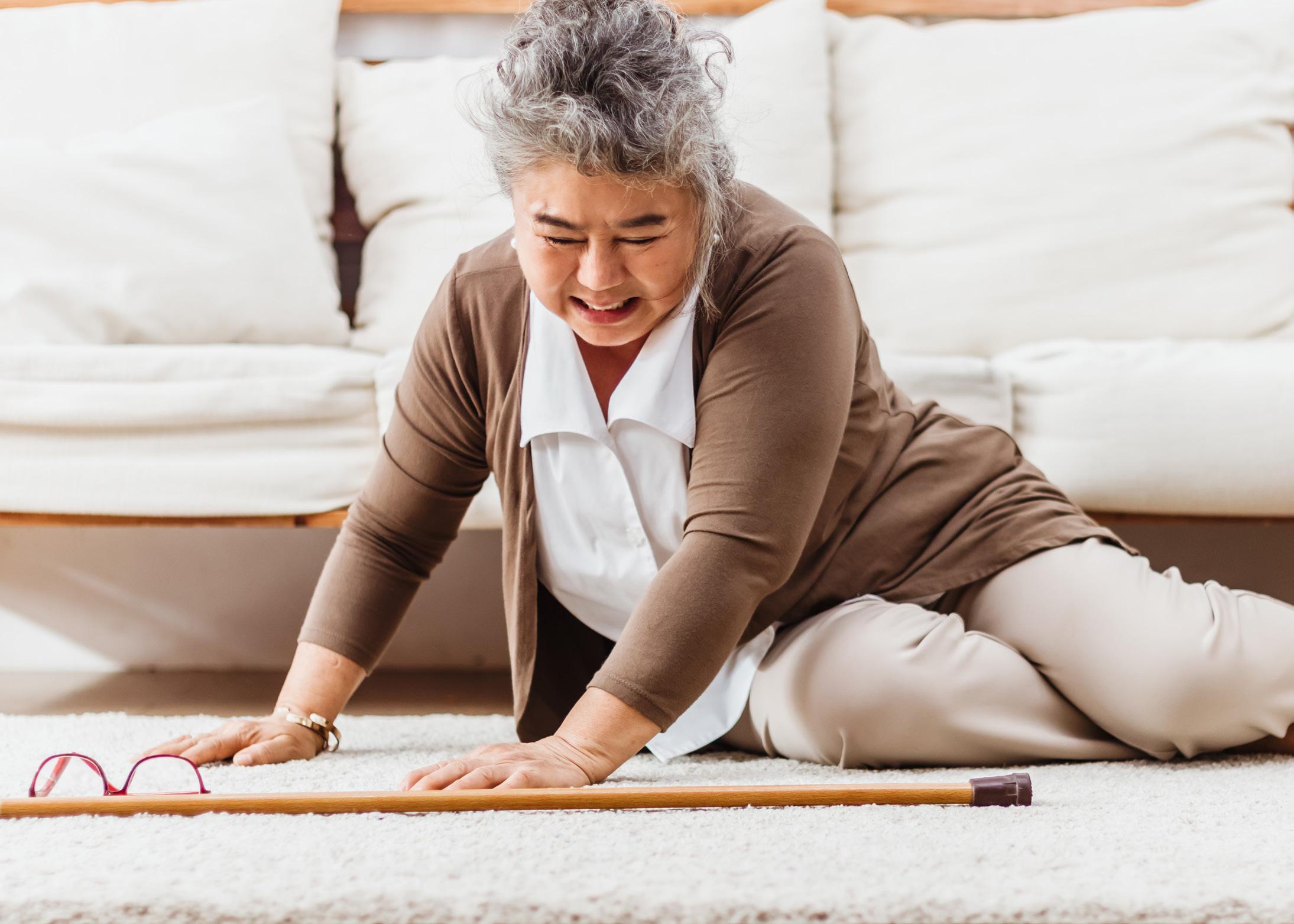
Shoes with medium to high heels, open backs, thick soles and ill fit can often contribute to falls.
Other environmental issues include wiping up spills promptly, keeping clutter picked up and avoiding stepladders.
An environmental assessment by a physical therapist can help people better understand how their “perfectly safe home” they’ve lived in 30 years may at this point of their lives be fraught with fall hazards.
Season Bonino, doctor of physical therapy and instructor at Nazareth University in Rochester, said that changes in vision often sneak up on people in their older years.

“A lot of times, there’s a small lamp in the corner of the living room,” she said. “That lack of lighting can lead to significant fall risk.”
Motion sensing lights can illuminate the pathway to the light switch. For homes with insufficient outlets, battery- operated and solar lights can help.
Throw rugs and bathmats are also common fall culprits because “as we get older, we aren’t picking our feet up as high,” Bonino said.
Taping the throw rug’s corners down may help, as can draping the bathmat over the tub when finished with it.
Handrails at home entrances and grab bars — not the suction cup kind — near the tub and toilet can also reduce falls. These should be installed by a pro and sturdy enough to support an adult’s weight. Towel bars are not enough.
Bonino warned about small furniture like coffee tables and ottomans close to the sofa.
Rather than forcing a shuffle to sit down, clear out these items.
The raised threshold between rooms or uneven flooring on a patio or porch can cause falls, as can stairs, since people don’t perceive the difference in height. Bonino recommends contrasting tape on steps to make these transitions easier to see.
Along with changes in vision, many people experience changes in balance as they age.
“If your balance is off a little, that can be the time to stop in and see a physical therapist or talk with your doctor before you have a fall,” Bonino said.
Patients in New York do not need a prescription or referral from a doctor to see a physical therapist for 10 visits or 30 days.
People of every age occasionally trip. However, older adults lose the ability to take that “fast step” and not completely wipe out.
“Our research is showing that we can be retrained,” Bonino said. “It takes about 45 minutes to significantly reduce fall risk based on validated fall measures.”
Her office uses a slip trainer device that uses a safety harness. No one actually falls, but it elicits a response to see how well they can try to prevent falling. This helps them relearn how to fast step and not fall.
Page 18 • IN GOOD HEALTH – Buffalo & WNY’s Healthcare Newspaper • September 2023 Golden Years
24-Hour Crisis Hotline: 716-834-3131 or Dial 988 Crisis Services is the Regional Network Provider for: NO MATTER WHO WHEN WHY YOU MATTER.
By Jim Miller


How to Plan a Green Funeral
Dear Savvy Senior,

What can you tell me about green funeral options? At age 80, I would like to preplan my funeral and make it as natural as possible.
Old Environmentalist

Dear Environmentalist,
Great question! Green funeral options are becoming increasingly popular in the United States as more and more Americans are looking for environmentally friendly alternatives to traditional funerals. Here’s what you should know about “green burial” and “green cremation” options, along with some tips to help you locate services in your area.



Green Burial
If you wish to be buried, a green–natural burial will minimize the environmental impact by forgoing the embalming chemicals (which is not required by law), traditional casket and concrete vault. Instead, you’ll be buried in either a biodegradable container or shroud with no vault, and you won’t be embalmed. This allows the body to decompose naturally and become part of the earth.
If you want to temporarily preserve the body for viewing or a memorial service, instead of embalming, you can request dry ice or Techni ice, a refrigeration unit, or a nontoxic embalming agent.




You’ll also be happy to know that green burials are much cheaper than traditional funerals, which average around $8,000 in 2023. By scrapping the coffin, vault and embalming, which are expensive, you’ll save yourself several thousand dollars on your funeral costs.



To find green burial services in your area, a good first step is to see if there’s a certified green funeral home in your area and contact them. The Green Burial Council offers an online directory of providers and other resources at GreenBurialCouncil.org.
If there isn’t one nearby, your next step is to contact several traditional funeral homes to see if they offer green funeral service options — many do.



You’ll also need to find a green cemetery. There are nearly 100 green cemeteries throughout the U.S., along with more than 300 traditional (hybrid) cemeteries that offer green burials too. To find them, the New Hampshire Funeral Resources, Education and Advocacy website has a list at NHfuneral.org. Or, if you own rural property you may be able to have a home burial there, if your state and county allow it.
If, however, there are no green cemeteries nearby you can still make

your burial more environmentally friendly by not being embalmed. And, if the cemetery allows, using a biodegradable casket or shroud and skipping the vault. If a vault is required, ask to have holes drilled in the bottom, or use a concrete grave box with an open bottom so the body can return to the earth.
Green Cremation
If you would rather be cremated, you have some green choices here too. While cremation has always been touted as being more eco-friendly than a typical burial, a traditional cremation, which uses high heat to incinerate the body, does emit greenhouse gases into the air.
A green cremation, however, uses water and potassium hydroxide to reduce a deceased body to its basic element of bone ash within a few hours. This green technique, which is known as alkaline hydrolysis, is a little more expensive than traditional cremation but, unfortunately, it’s not legal in every state. Contact some local funeral providers to find out if this is available in your area, or Google “alkaline hydrolysis cremation” followed by your city and state.
Another green consideration is deciding what to do with the remains. Instead of scattering, which can be harmful to the environment, there are a wide variety of biodegradable urns that dissolve into the earth or water over time, and memorial urns that will grow a plant or tree in combination with your ashes.
September 2023 • IN GOOD HEALTH – Buffalo & WNY’s Healthcare Newspaper • Page 19
Send your senior questions to: Savvy Senior, P.O. Box 5443, Norman, OK 73070, or visit SavvySenior. org. Jim Miller is a contributor to the NBC Today show and author of “The Savvy Senior” book.
SEND US YOUR FEEDBACK AND GET A FREE SUBSCRIPTION! Everybody seems to take vitamin D nowadays — but does it make any difference? P. 13 DoYouReally Need to take Vitamin D Supplements? INSIDE• U.S. Birth Rates Continue to Fall p 5 • Why You Should Eat More Bananas? 11 5ThingsYouShouldKnow AboutHeartDiseases BFOHEALTH.COM FEBRUARY 2023 ISSUE 99 FREE IV COCKTAILSBusinessatBFLOHydrationisgrowingas morepeopleturntoIVfluidstoimprovetheir health.BFLOHydrationoffersIVcocktailswith nutrientstailoredforathleticperformanceand recovery,headacheandmigrainetreatment, immunityandstressandanxiety.P.20 Damar Hamlin’s Cardiac Arrest SpursInterestinCPR.P.7 UNSUNG HERO Michelle Rainville,an ER doctor from Eastern Niagara Hospital, discusses‘scary’early days of COVID-19 days when she was afraid to go to work.She recently earned the Unsung Heroes recognition from UBMD The State of Drug Addiction. How Bad is the Problem in the Western New York?P.15 FREE NEARLY 2 MILLION CASES OF CANCER EXPECTED IN‘23 Local experts offer some tips on how to keep cancer at bay BFOHEALTH.COM MARCH 2023 ISSUE 101 Art at Roswell Park Helps People Battle Cancer P.10 NAME ADDRESS WHAT DO YOU LIKE ABOUT IN GOOD HEALTH NEWSPAPER? CITY/TOWN STATE ZIP Yes! Send me six free issues of In Good Health to the above address, beginning with the upcoming issue. P.O. Box 550, Amherst, NY 14226 Disclaimer: your comments may be used for marketing purposes. WHERE DID YOU PICK UP THE PAPER? WESTERN NEW YORK CHAPTER We are here for you. Visit alz.org/wny or call our 24/7 Helpline at 800.272.3900.
AFTER OVER 100 ISSUES
We Thought We Could Brag a Bit!
A few comments from readers who subscribed to In Good Health in the last month or so. We usually receive dozens of subscription requests every single month. We thank our readers.
“Where do I begin? The whole newspaper has the most interesting topics available for both young and especially senior readers. I enjoy the paper very much.”
Carmine Pignone Lackawanna
“It’s full of health information that helps me to ask more informed medical questions of my doctors.”
Donna P. Howard Buffalo
“It allows the reader to receive new information and updated information regarding health and wellness, and information on new specialists.”
Denise J. Dominiak West Seneca
“Most informative and enjoyable. Educational articles on important topics. Excellent! Delicious healthy recipes!! Comments on recent news health topics. Just wonderful information.”

J.L. Peterson Buffalo
“Very informative. So many things I read I never knew. I like to cut out and save some articles or pass them on to someone who does not live here.”
Bernadette Kania Buffalo
“Articles on different types of health. I enjoy each and every page. Always something to read”
Kim Stevenson Kenmore
“There are so many interesting and informative articles in your paper. I love reading it.“
Karen Meegan Hamburg
“The best paper! I tell everybody about it!“
Judy Newll West Seneca
Page 20 • IN GOOD HEALTH – Buffalo & WNY’s Healthcare Newspaper • September 2023
In Good Health — WNY’s Healthcare Newspaper www.BfoHealth.com Editor@bfohealth.com Make In Good Health your Advertising Choice for 2024














































































 By Deborah Jeanne Sergeant
By Deborah Jeanne Sergeant




















































































